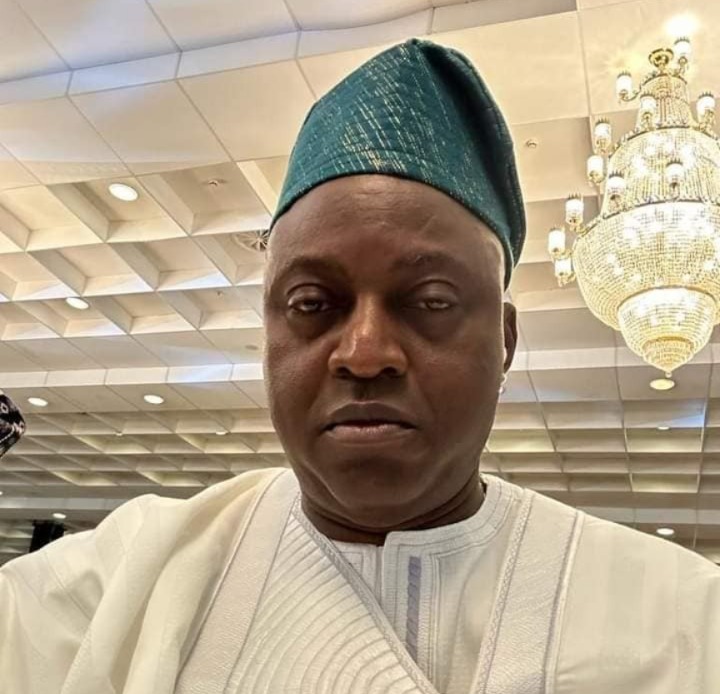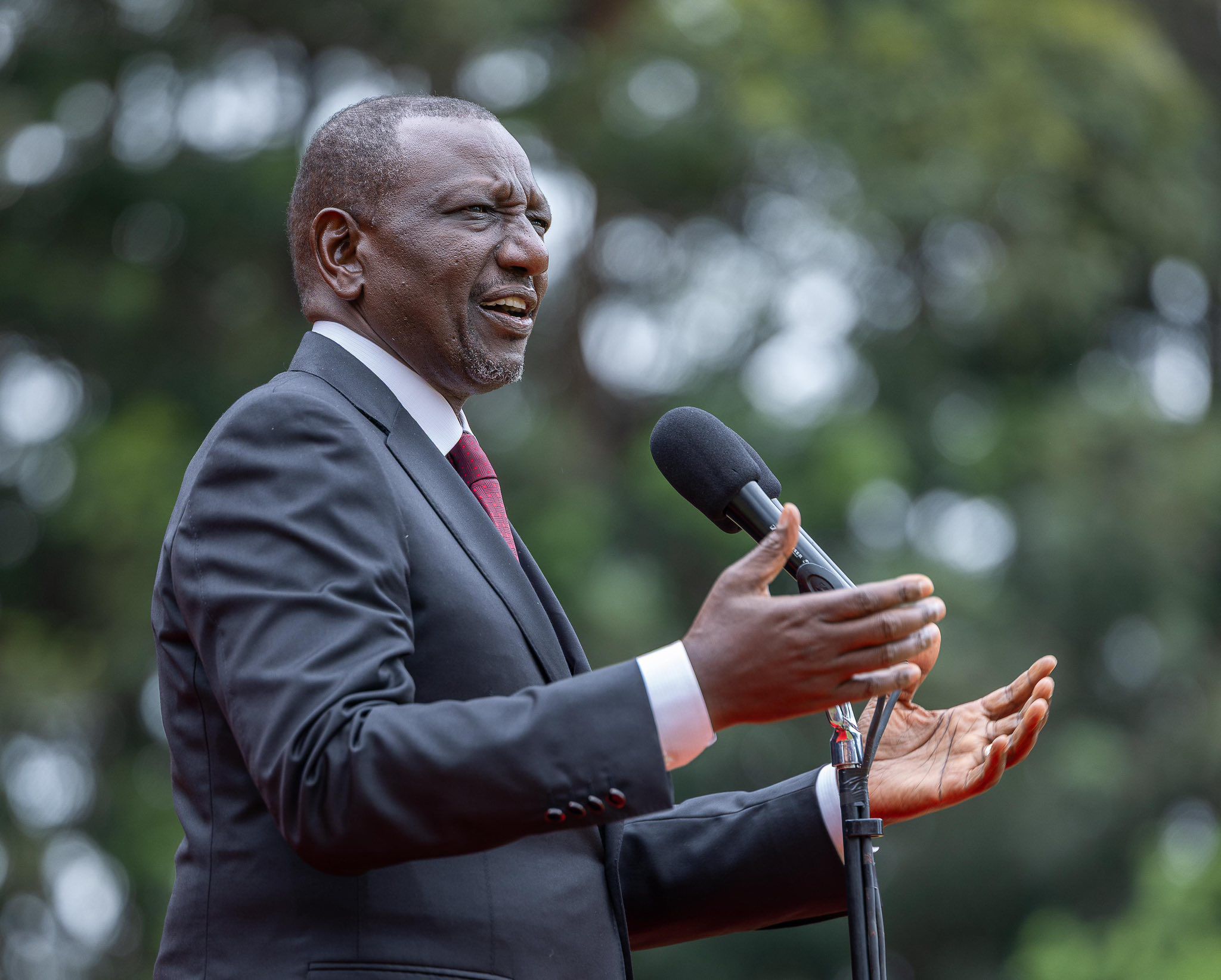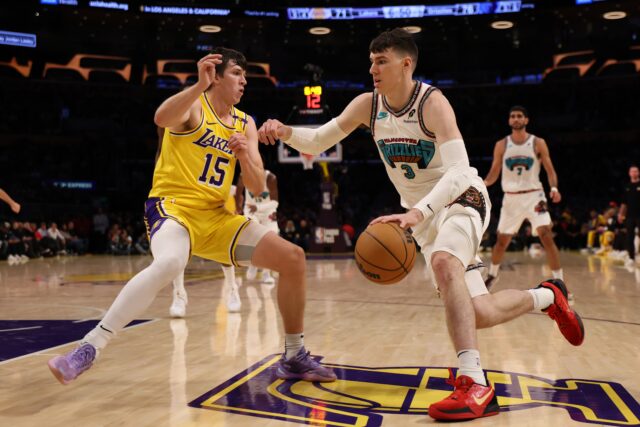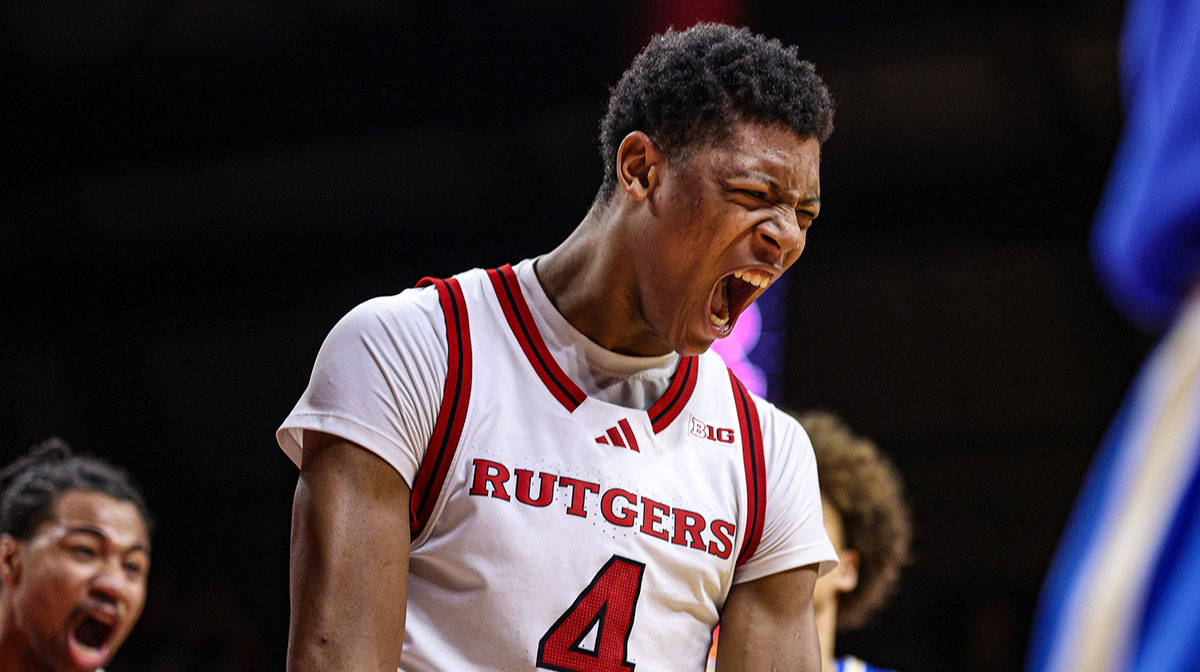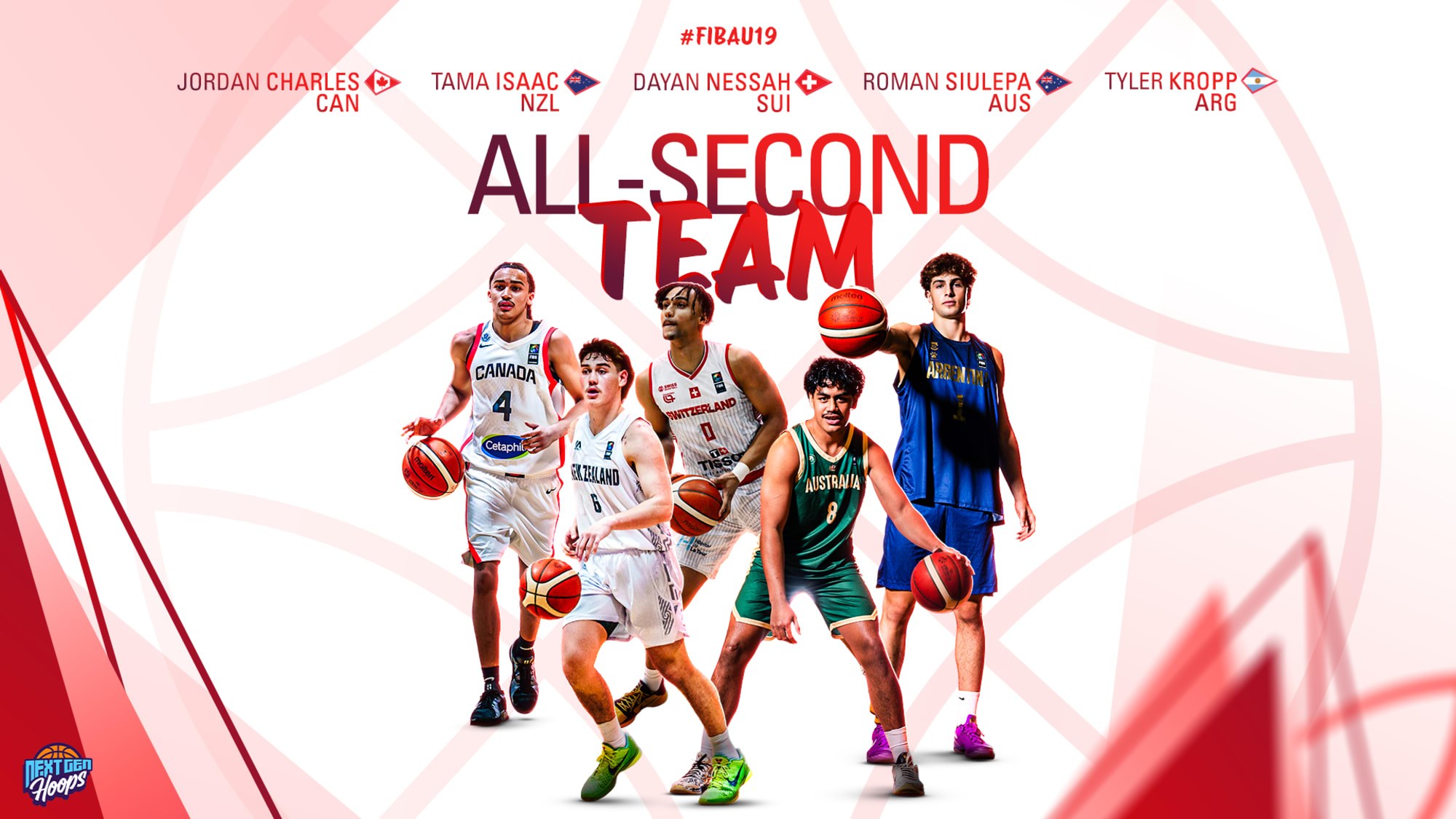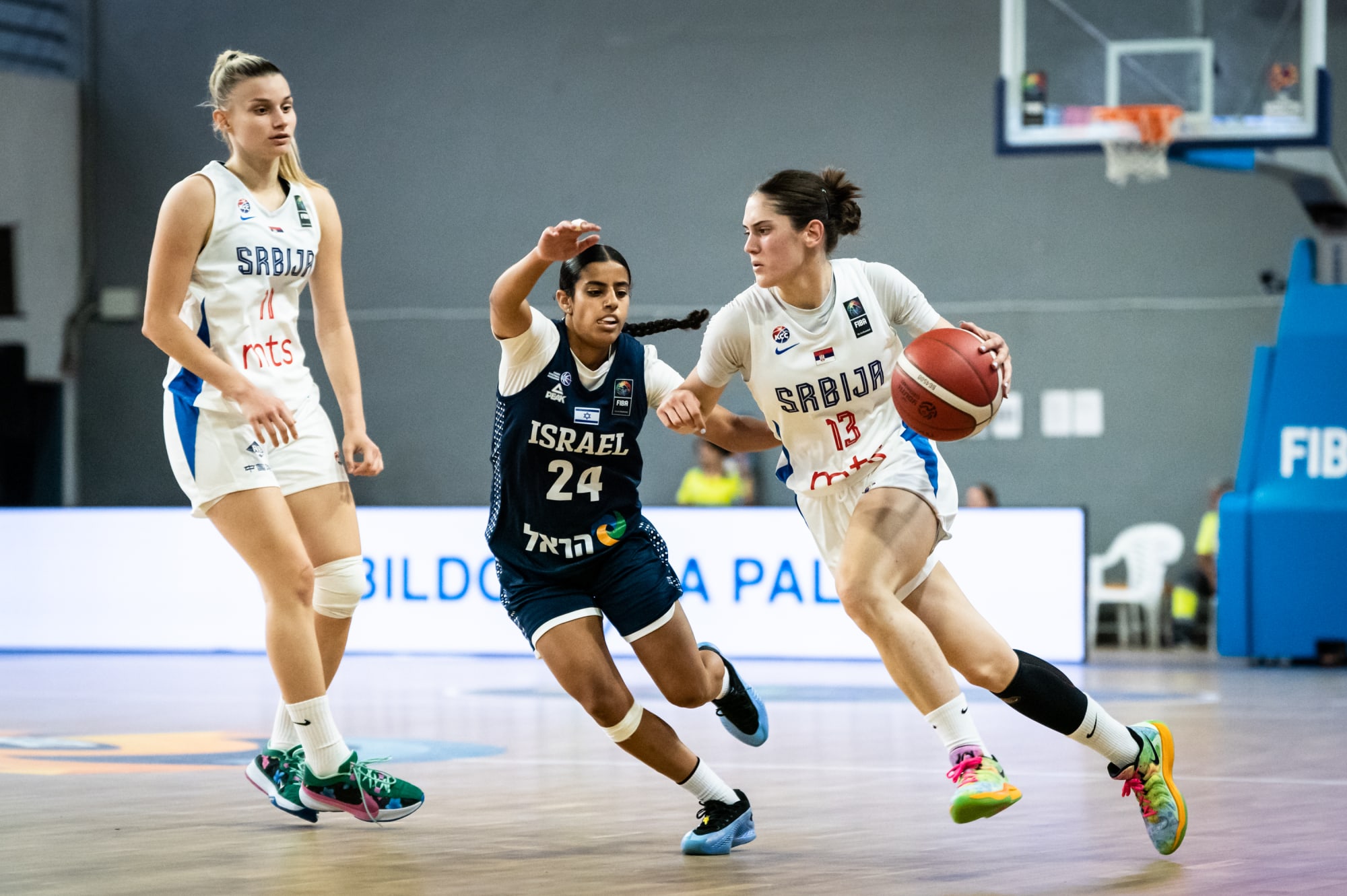253 Balloons Over Broadway Project Ideas That Pop!
The Macy’s Thanksgiving Day Parade has evolved from a store promotion into a cherished holiday tradition.
These educational project ideas convert passive parade watching into active learning experiences that span multiple disciplines.
Students can study history, science, art, and technology while developing critical thinking, creativity, and collaboration skills.
Each project connects curriculum standards to real-world applications, making learning engaging and memorable.
Building floats and researching balloon physics celebrate the parade’s cultural significance while fostering hands-on learning and creativity.
Cross-curricular parade projects blend disciplines, offering real-world learning.
Students can combine math and art by calculating balloon proportions for scale models.
They can merge history and language arts by researching parade evolution and writing period-appropriate newspaper articles.
These approaches help students see knowledge connections and develop transferable critical thinking skills.
Educators integrate parade themes into lessons to demonstrate practical learning applications.
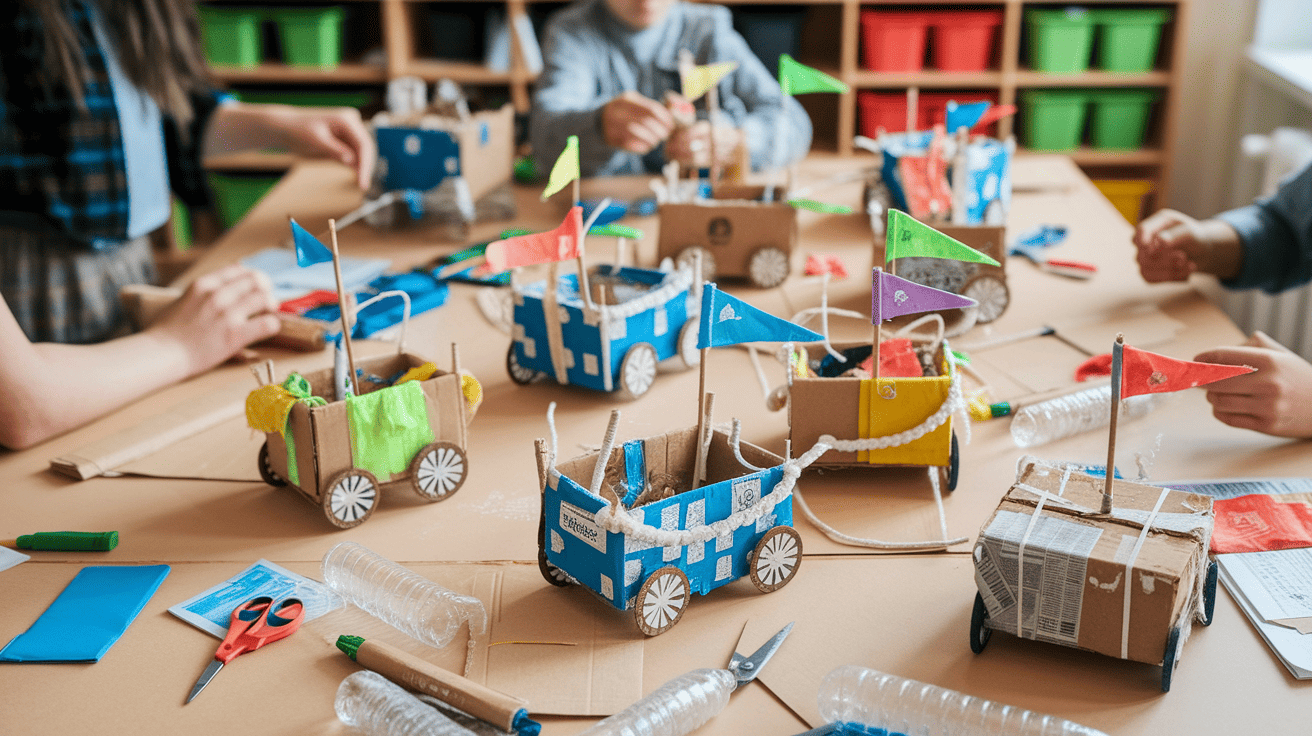
Alter cardboard boxes, plastic bottles, and newspaper into a miniature parade float.
Use a string to create moving parts like flags or wheels. Students learn upcycling and develop engineering skills.
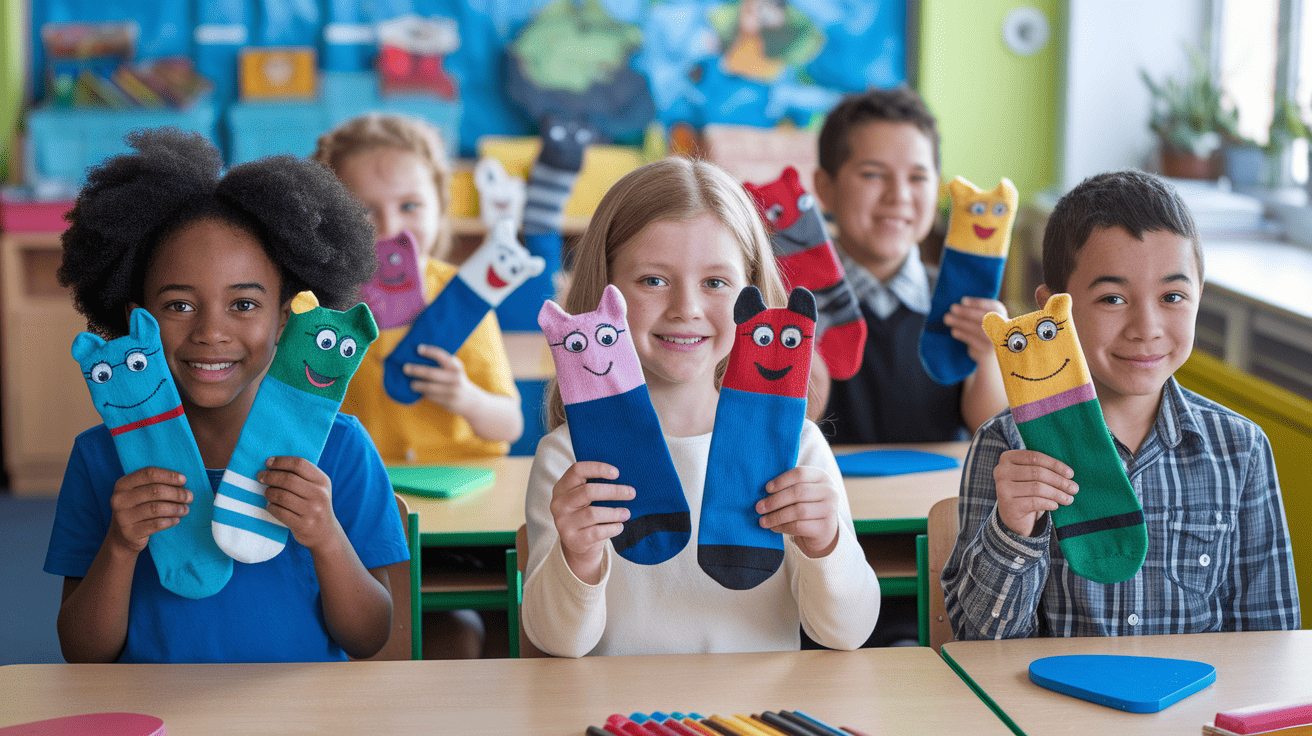
Create hand puppets or marionettes of storybook characters like Charlotte’s Web or Harry Potter.
Students practice storytelling, character development, and performance skills.
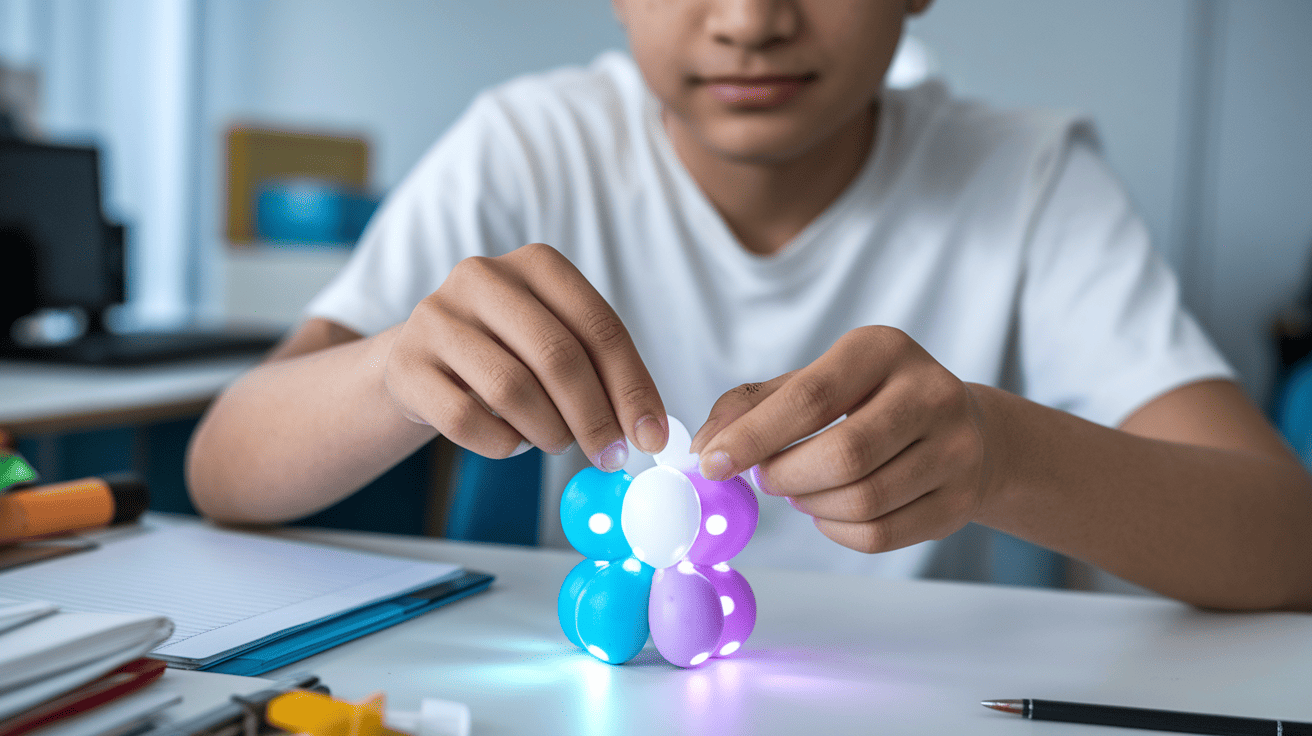
Build a balloon float incorporating simple motors, LED lights, or rotating mechanisms.
Students study engineering principles, electrical circuits, and mechanical design.
This project shows how science and technology boost art and teach problem-solving and technical skills.
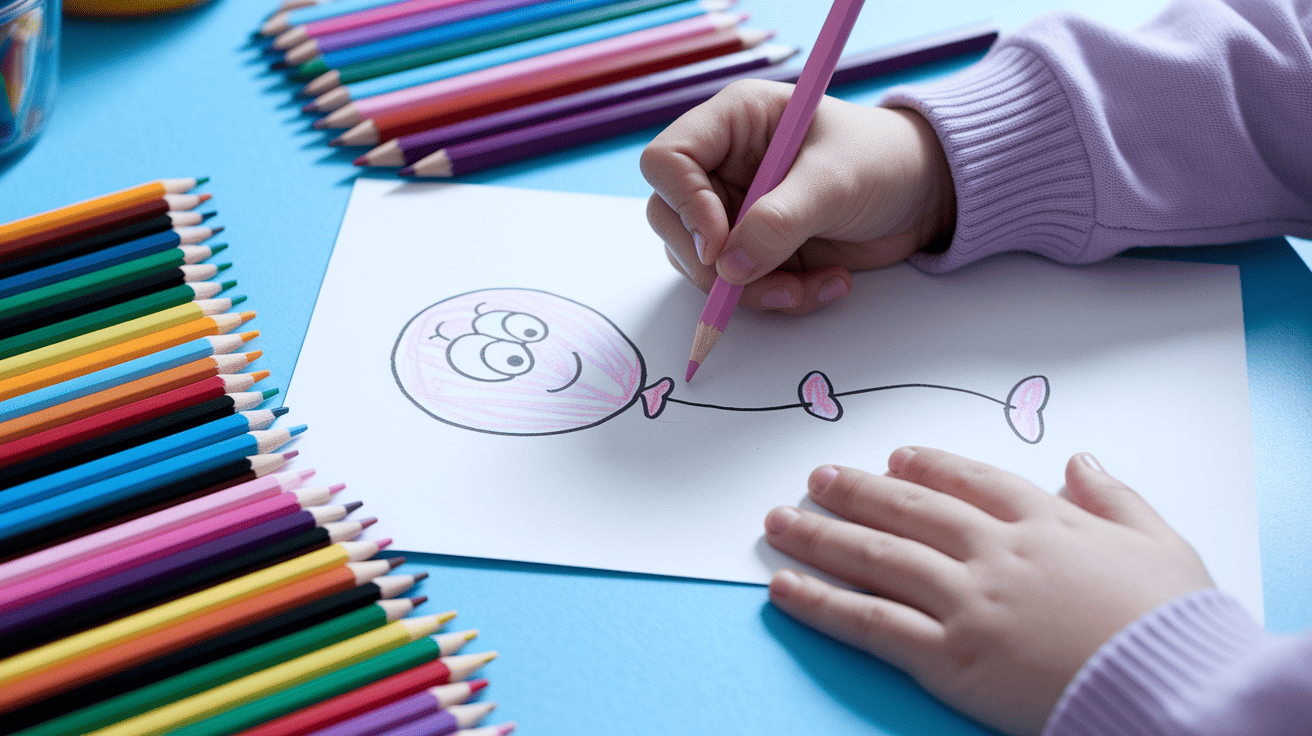
Sketch an original balloon character with a detailed backstory, including personality, experiences, and powers.
Students develop creative writing, character development, and visual design skills while exploring narrative structure and storytelling.
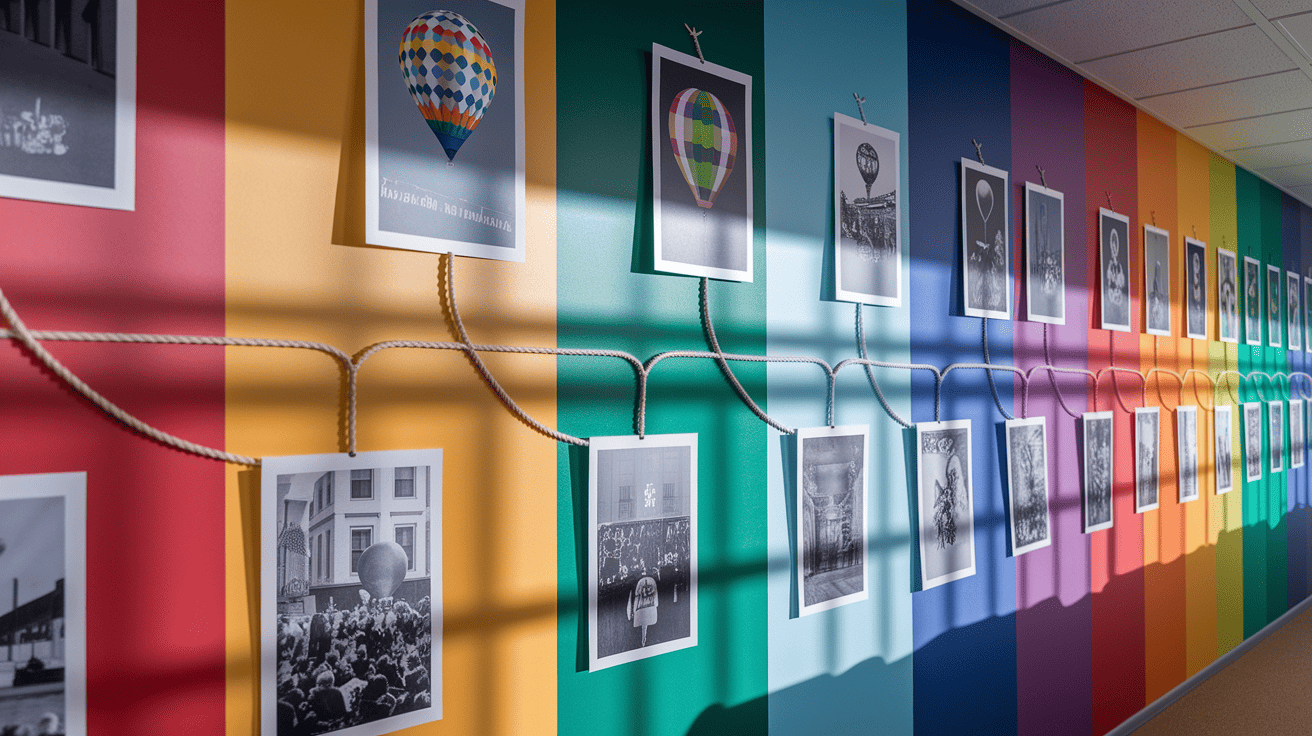
Research and create a visual timeline spanning from 1924 to the present day.
Include major milestones, famous balloons, and significant changes.
Students develop research, historical, and visual communication skills while learning about American cultural traditions.
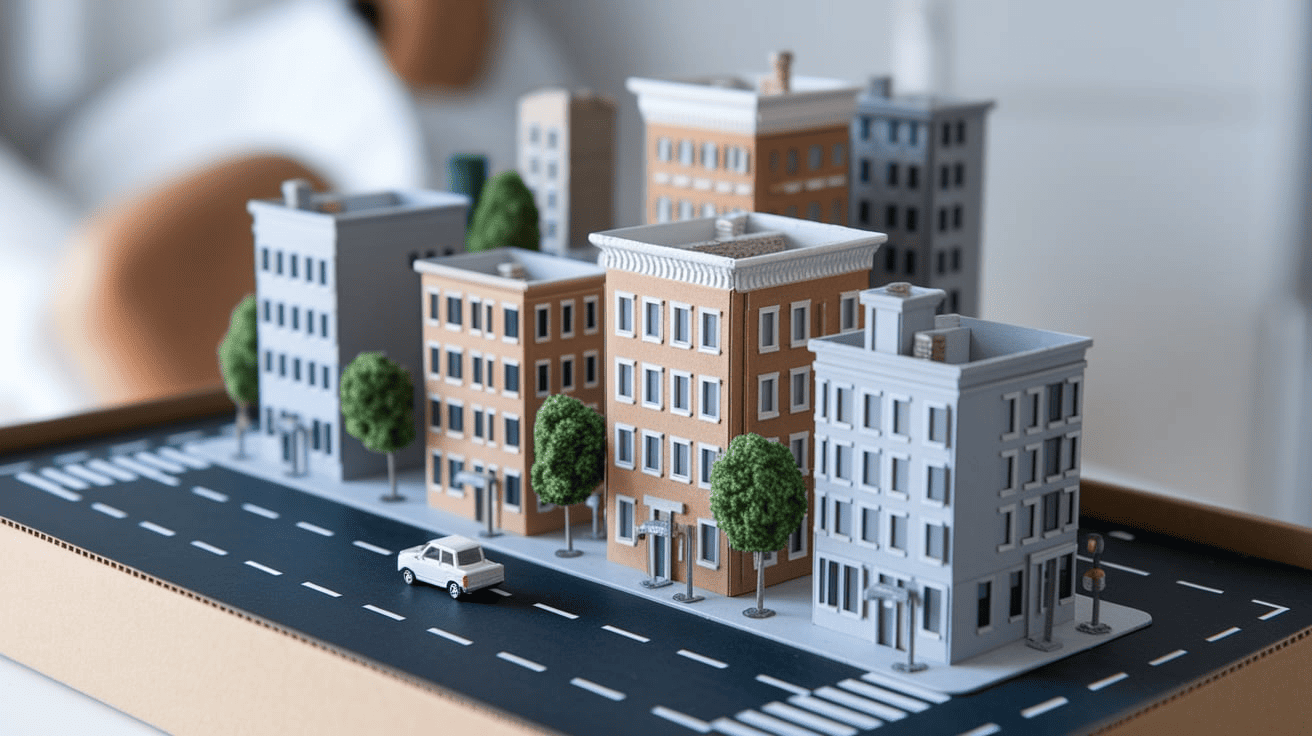
Construct a detailed miniature version of Herald Square and the surrounding Manhattan streets.
Students learn urban geography, spatial relationships, and architecture while developing fine motor skills and attention to detail.
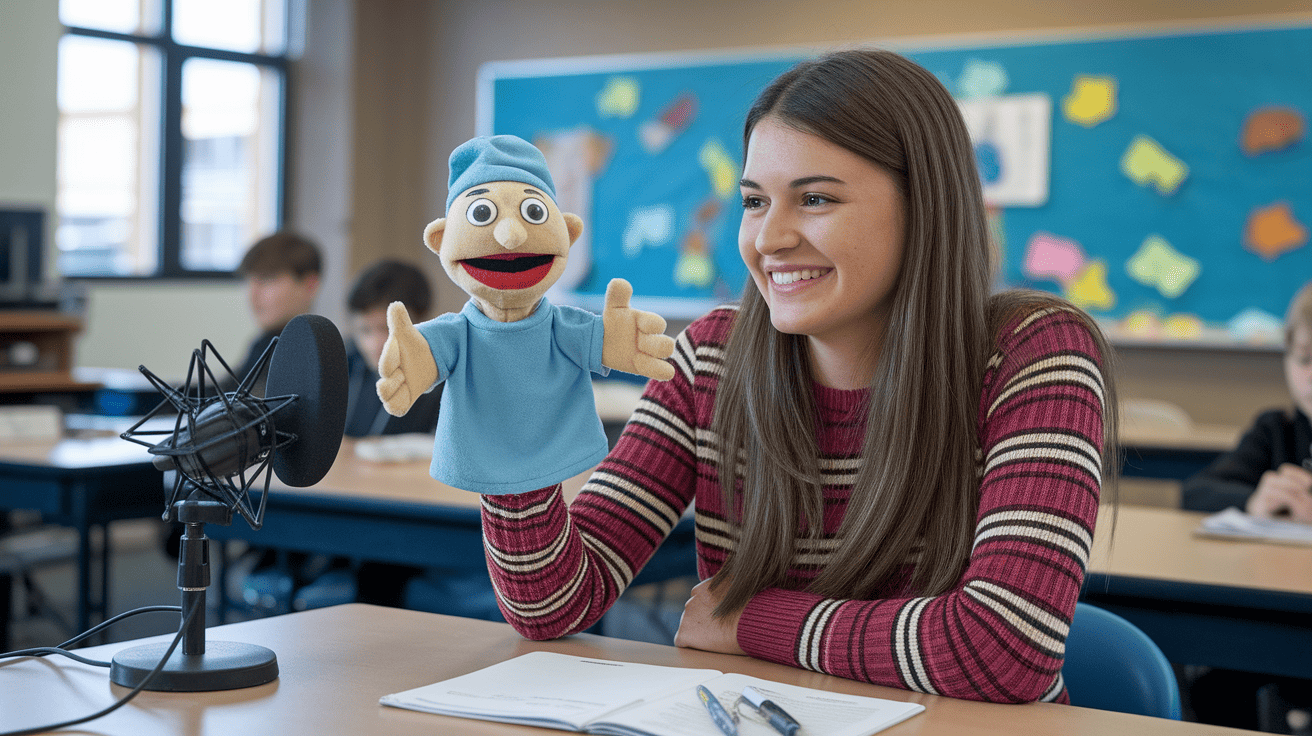
Research puppet master Tony Sarg, creator of the first parade balloons, and write interview questions.
This project combines history, creative writing, and theater to teach about influential American entertainment figures.
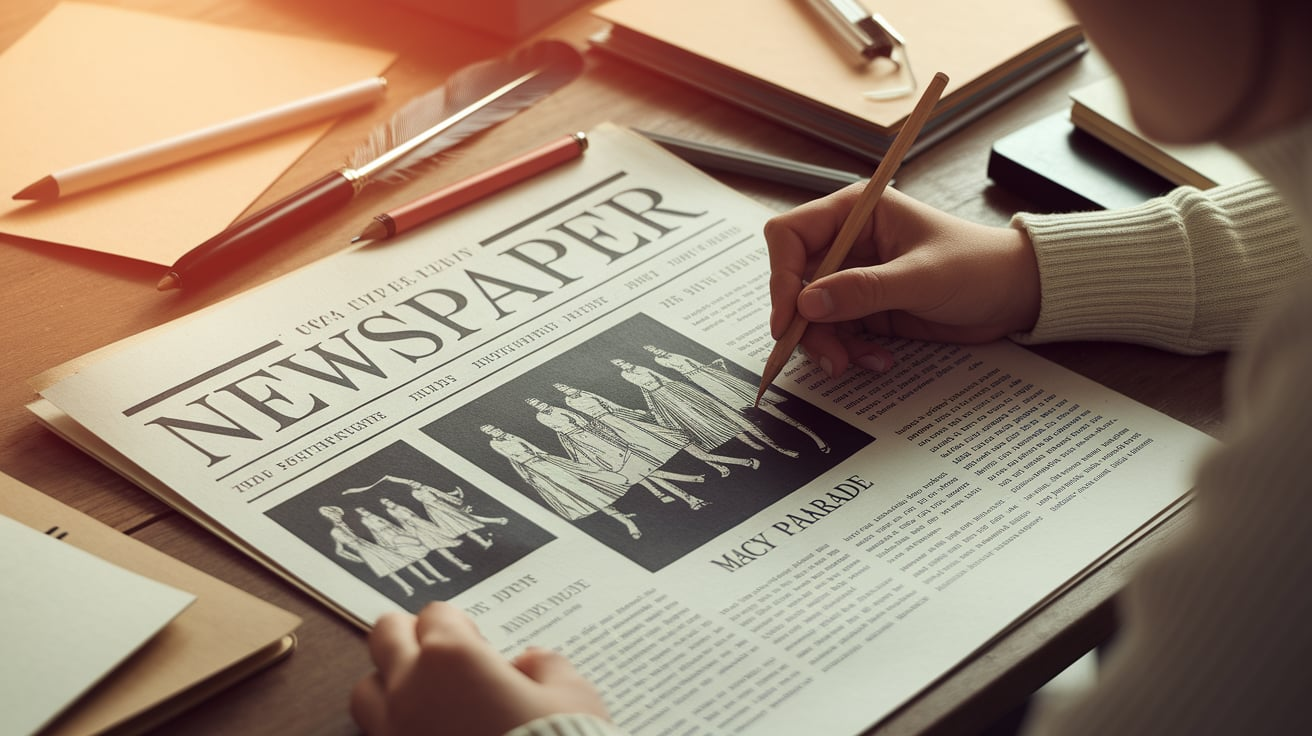
Craft a front-page newspaper article as if reporting live from the inaugural Macy’s parade.
Use accurate 1920s language and newspaper formatting.
Students learn journalistic writing, historical context, communication styles, and build research and writing skills.
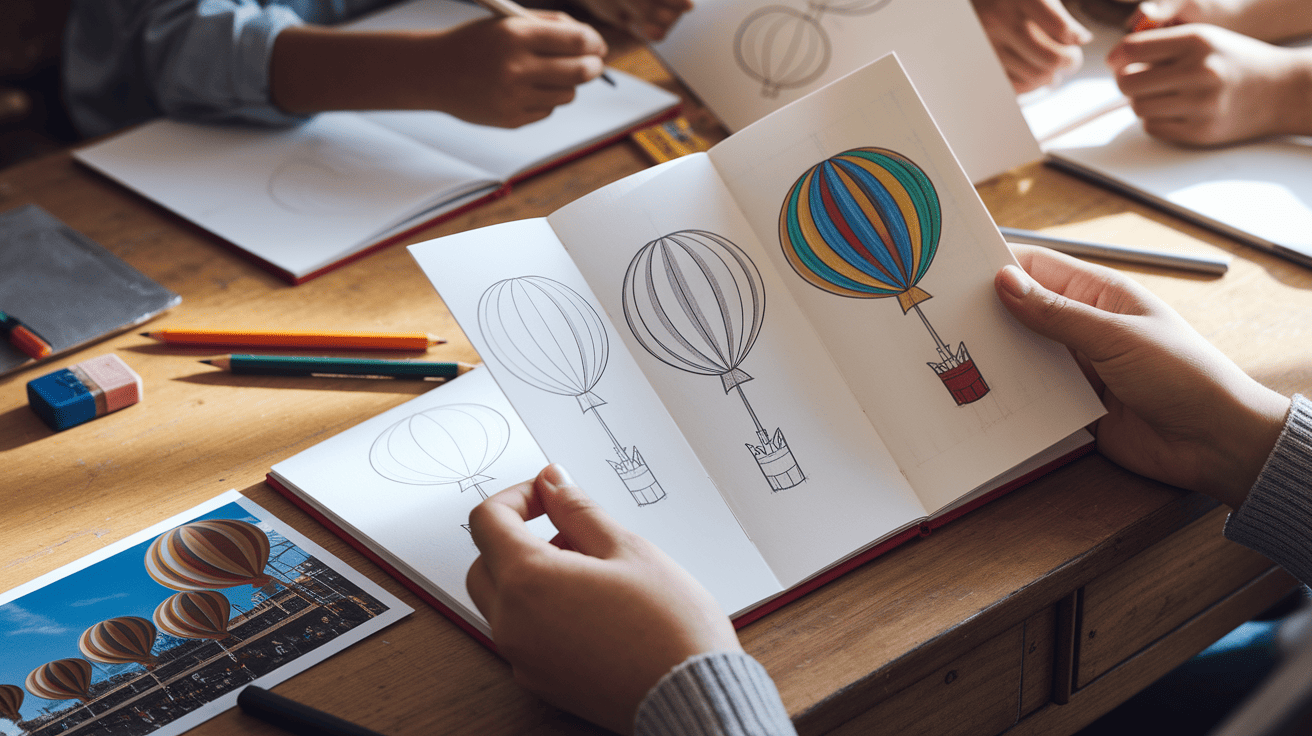
Draw images illustrating a parade balloon changing from flat fabric to a fully inflated character.
Students study animation, sequential art, and physics while developing drawing skills, patience, and motion understanding.
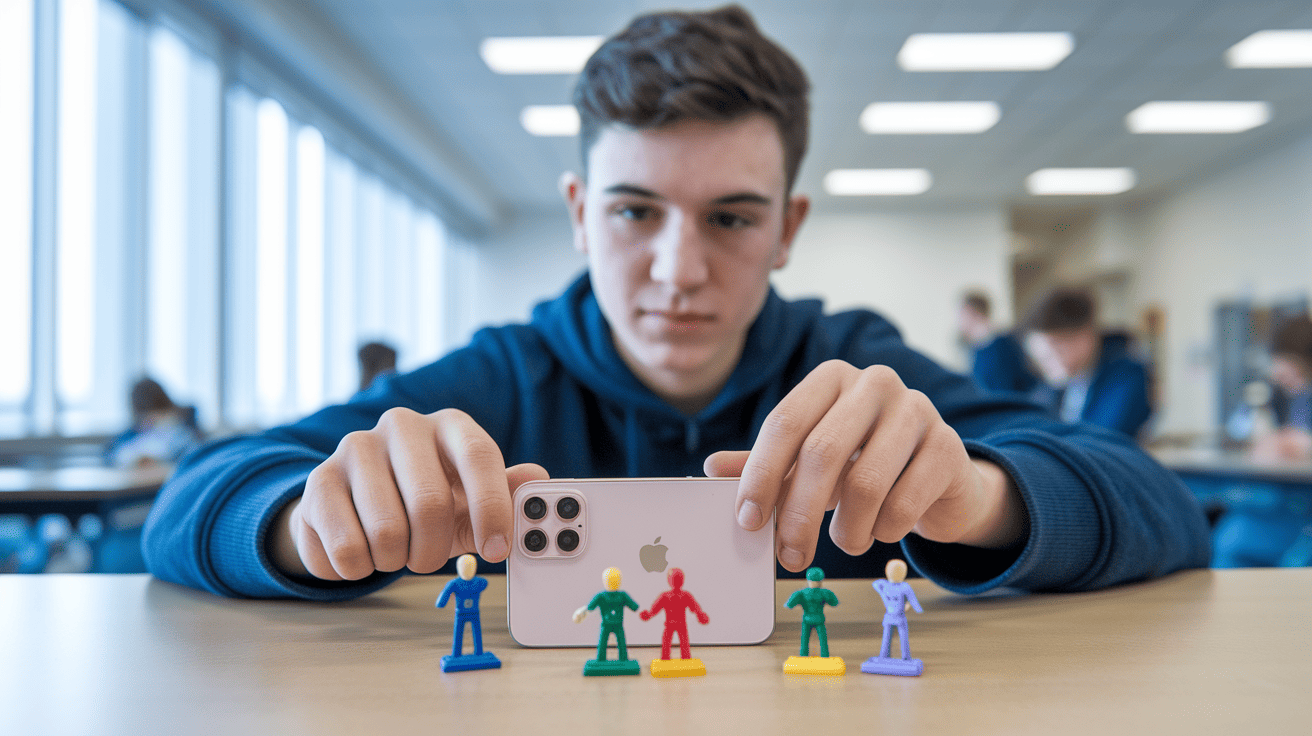
Create a short stop-motion video with toy balloons, action figures, and miniature floats moving through a parade route.
Students learn filmmaking, patience, storytelling, animation principles, and digital tools for multimedia projects.
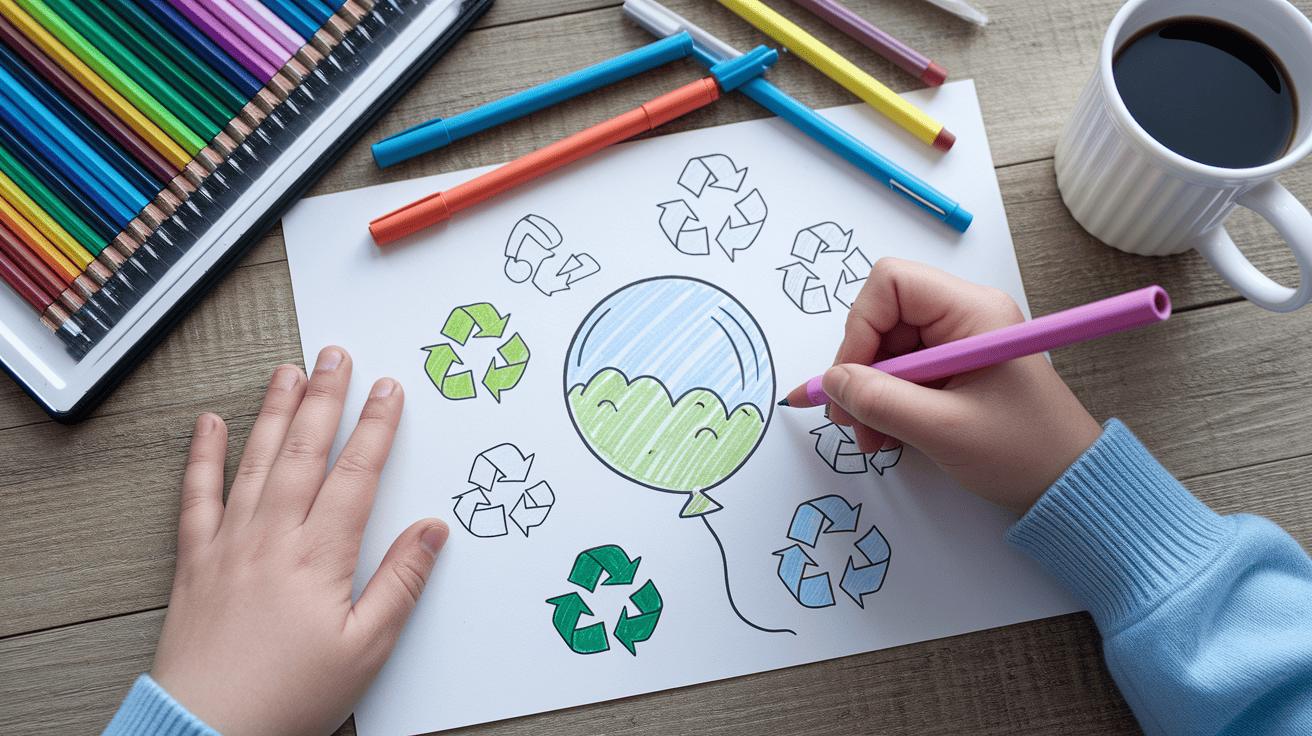
Design an eco-friendly balloon alternative with sustainable materials like recycled plastics or biodegradable fabrics.
Students study environmental science, engineering, and sustainability to develop awareness, innovation, and problem-solving skills.
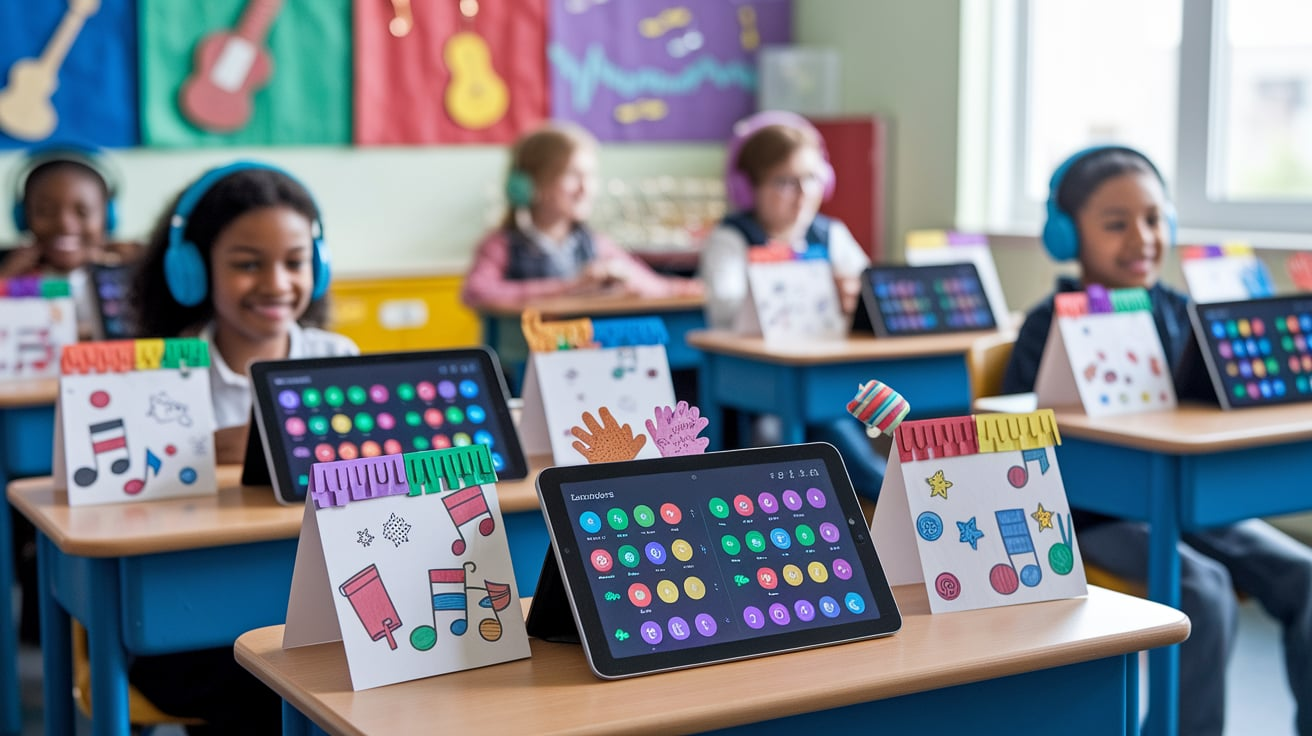
Curate songs that match various parade themes like Thanksgiving, winter holidays, or cartoon characters.
Students develop music appreciation, cultural awareness, and critical thinking by exploring music’s influence on visuals and emotions.
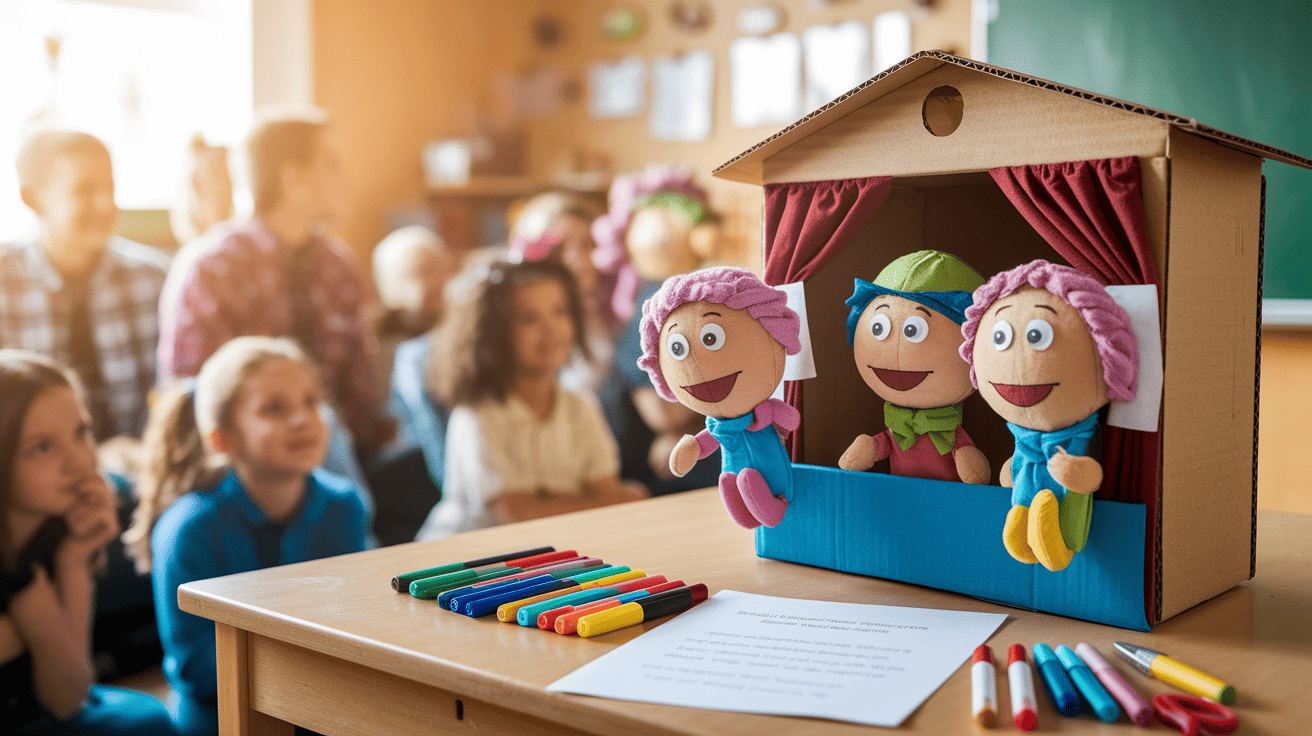
Create a script with parade balloons as characters facing challenges like strong winds or tangling.
Students learn writing, puppet-making, performance, teamwork, conflict resolution, and public speaking.
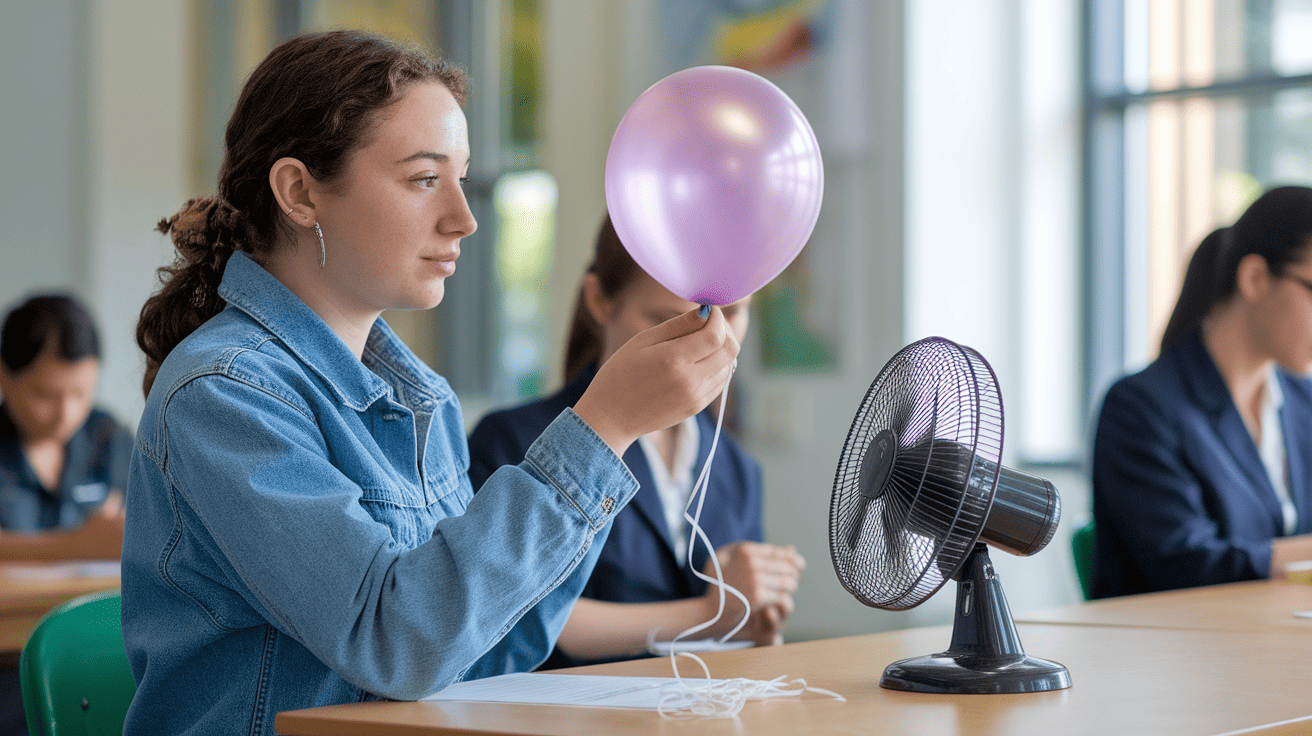
Engineer a helium-free floating balloon using hidden magnets, air currents, or supports; experiment with different materials and techniques.
Students study physics principles, magnetic forces, and aerodynamics.
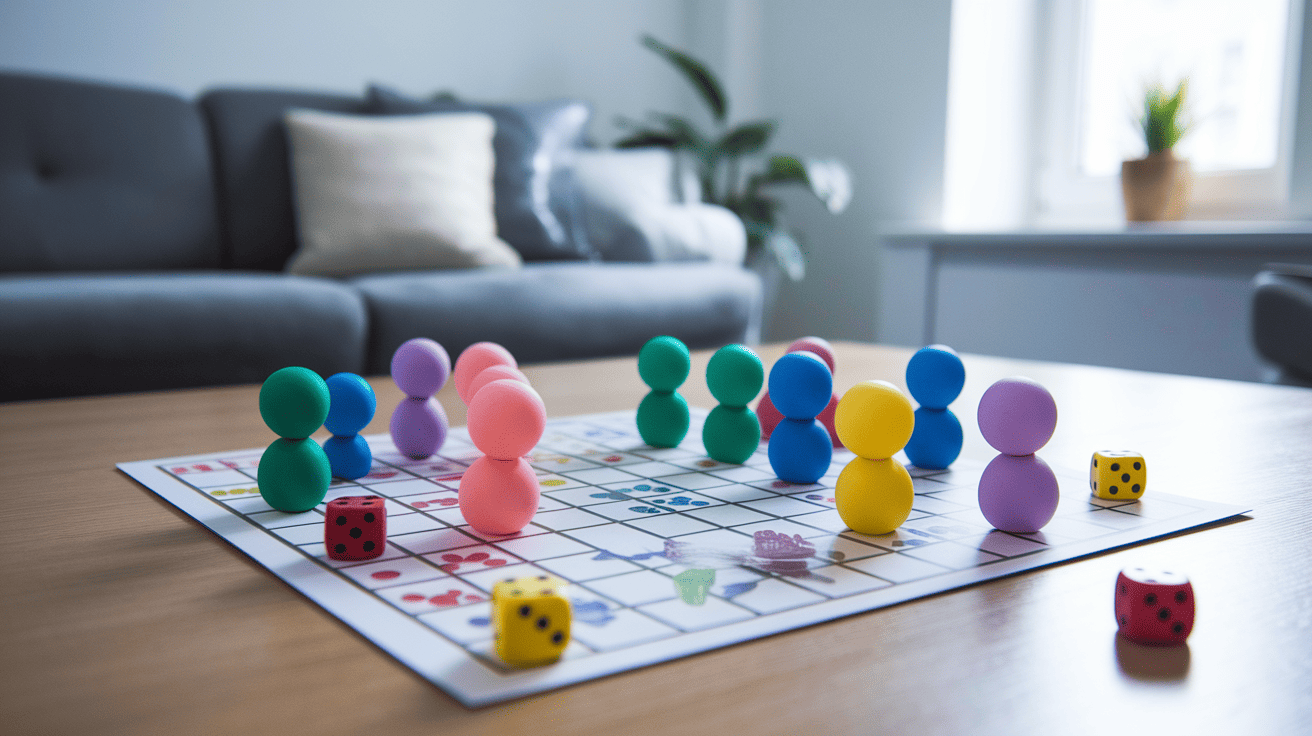
Design a strategy game where players guide parade balloons through city streets, avoiding obstacles like wind, buildings, and crowds.
Students learn game design, strategic thinking, rule creation, mathematical reasoning, probability, and decision-making.
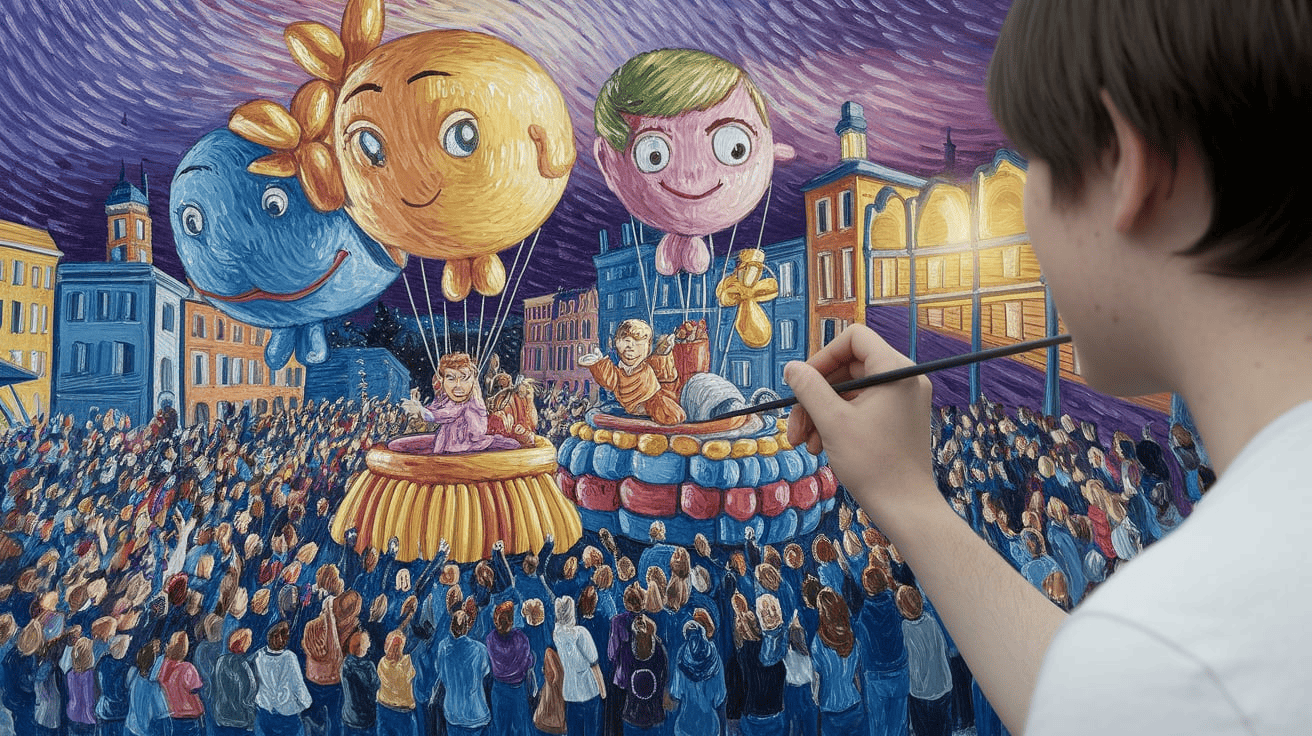
Create a parade painting inspired by artists like Van Gogh’s swirling style, Picasso’s cubism, or Warhol’s pop art.
Study the chosen artist’s techniques and apply them to parade imagery.
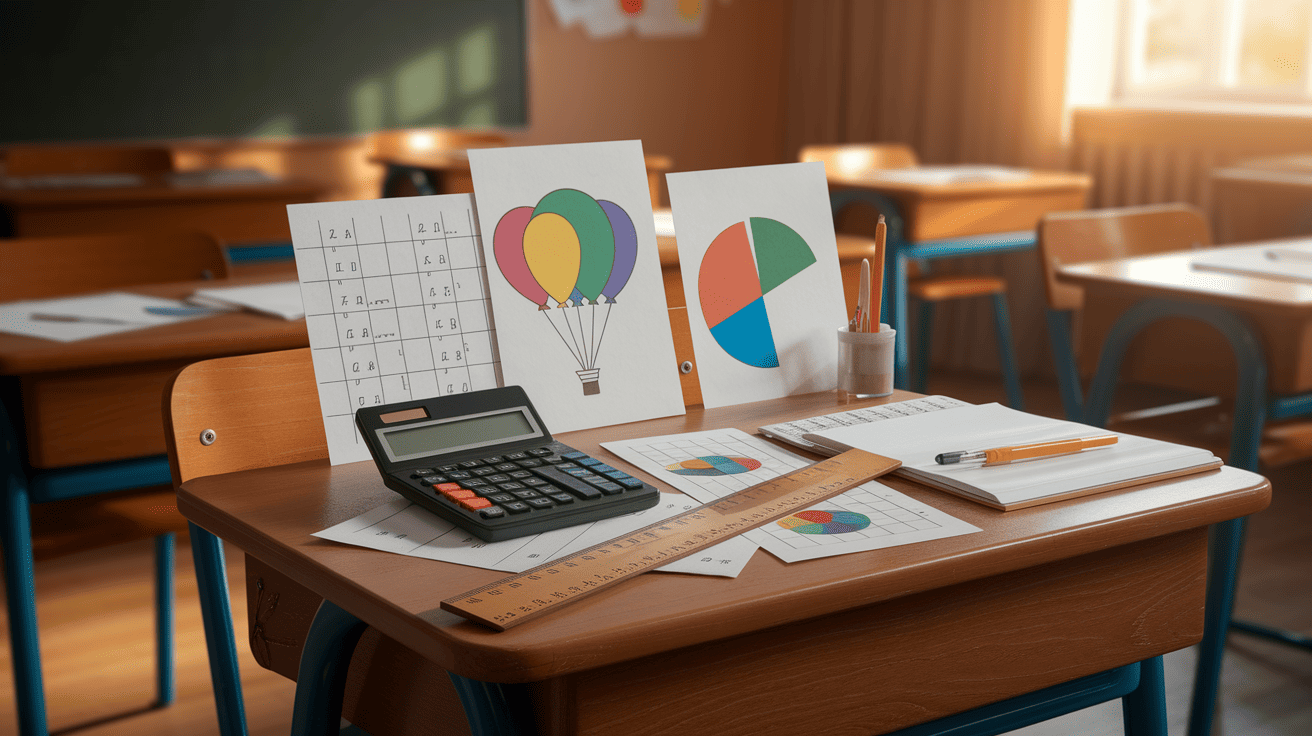
Calculate balloon volumes, helium requirements, and handler-to-balloon ratios using real parade data.
Create graphs, charts, and mathematical models.
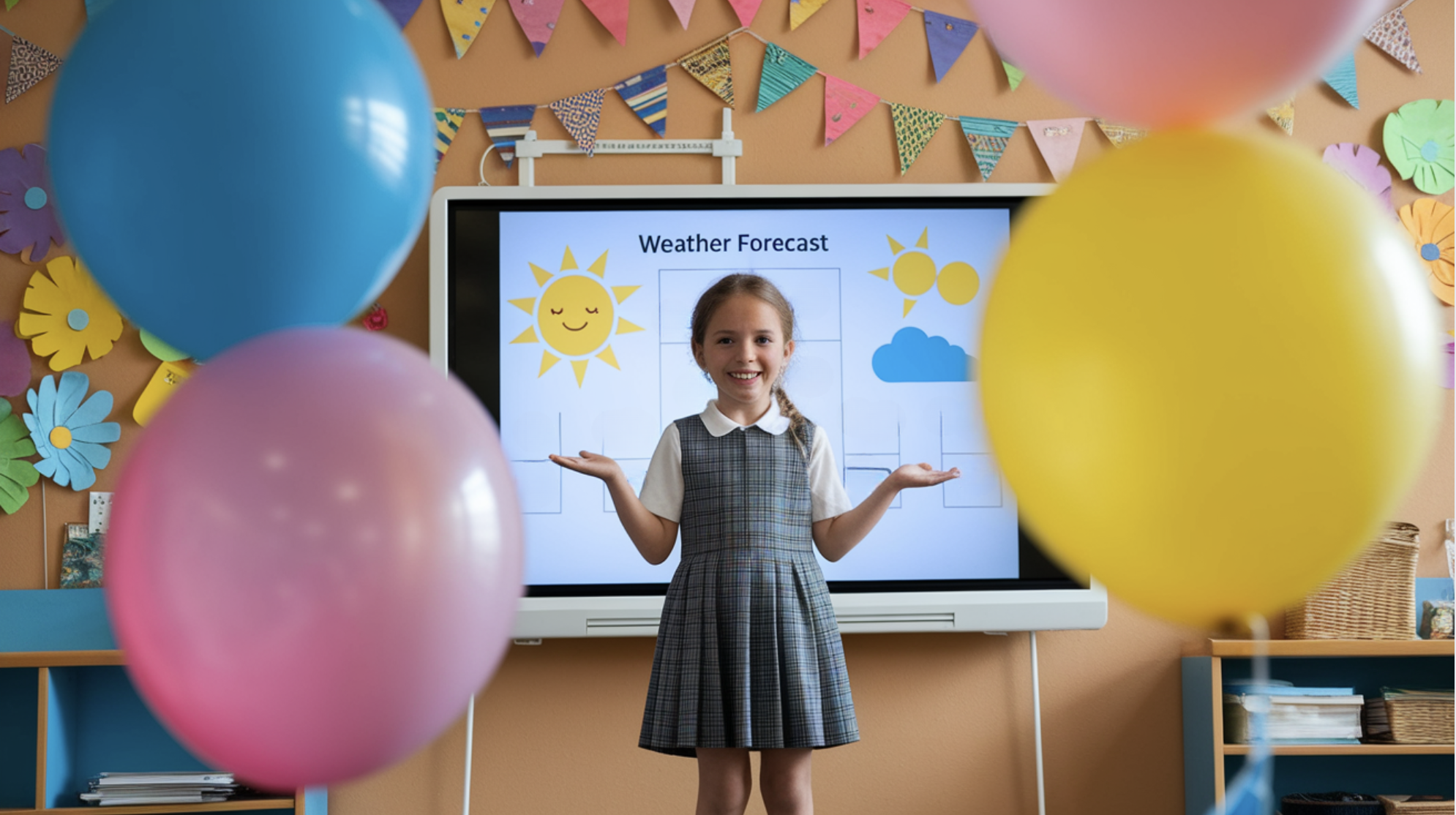
Create a meteorological forecast for parade conditions, including wind speed, temperature, and precipitation probability.
Students learn the basics of meteorology, data visualization, and scientific communication.
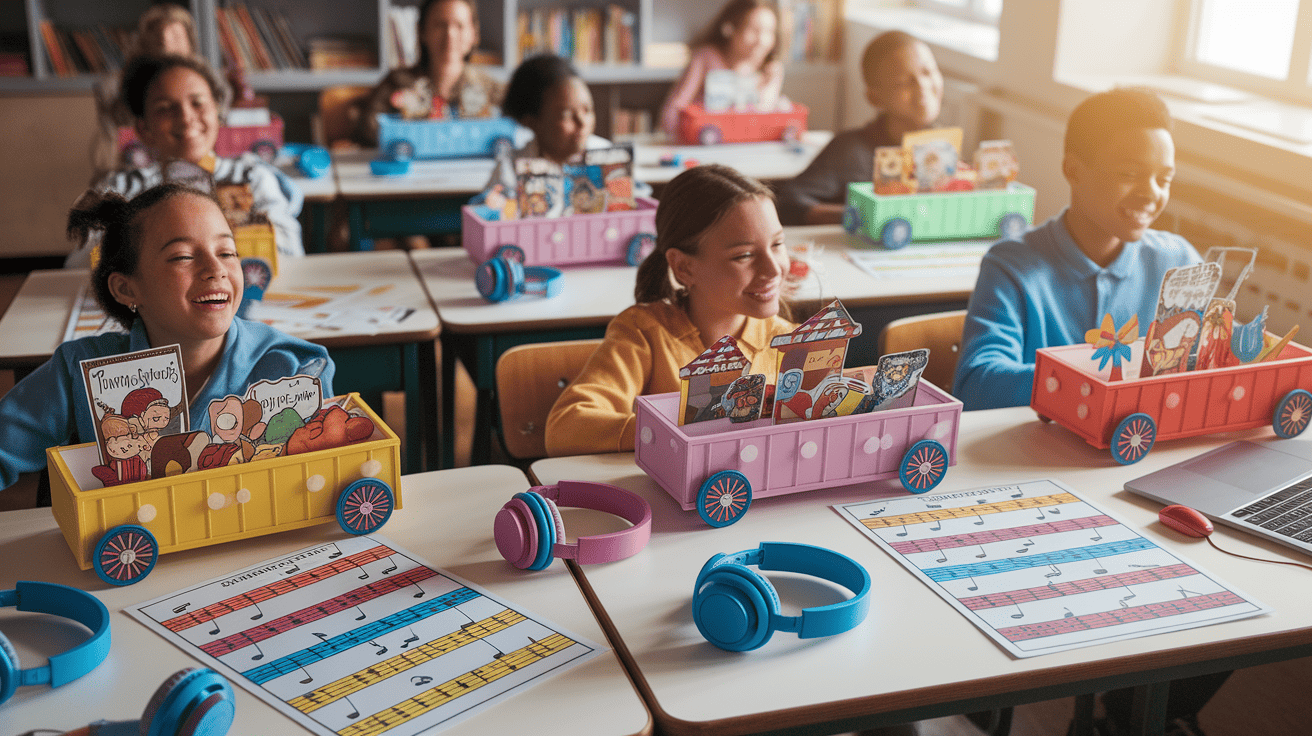
Write lyrics and melody for an original parade theme song, focusing on rhythm, rhyme, and memorable hooks.
Students study music theory, songwriting, and performance skills to understand how music creates atmosphere.
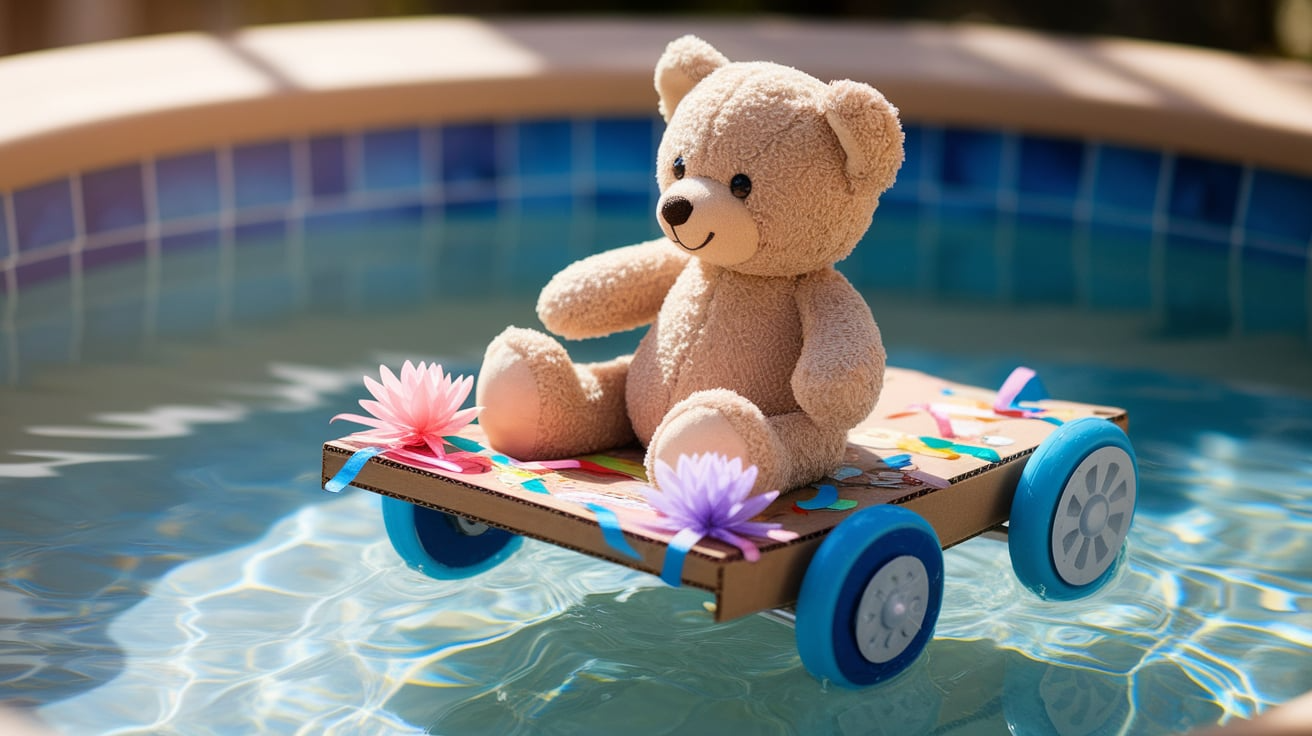
Construct a small-scale float that can carry a stuffed animal using wheels, decorations, and a pulling mechanism.
Students use engineering, art, and problem-solving to learn about scale, proportion, and mechanical systems through hands-on building and testing.
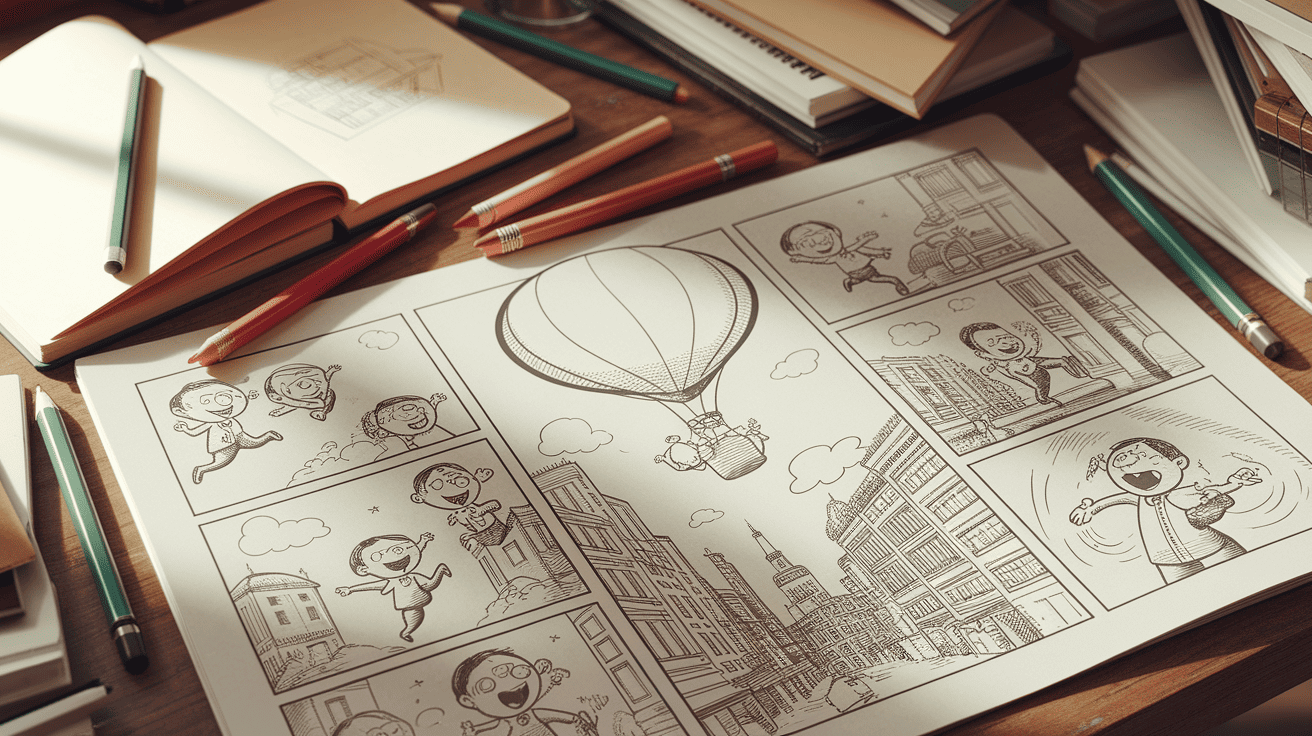
Illustrate a humorous comic story about a parade balloon that breaks free and happens through the city.
Students build skills in visual storytelling, humor, art, comic conventions, character growth, and narrative techniques.
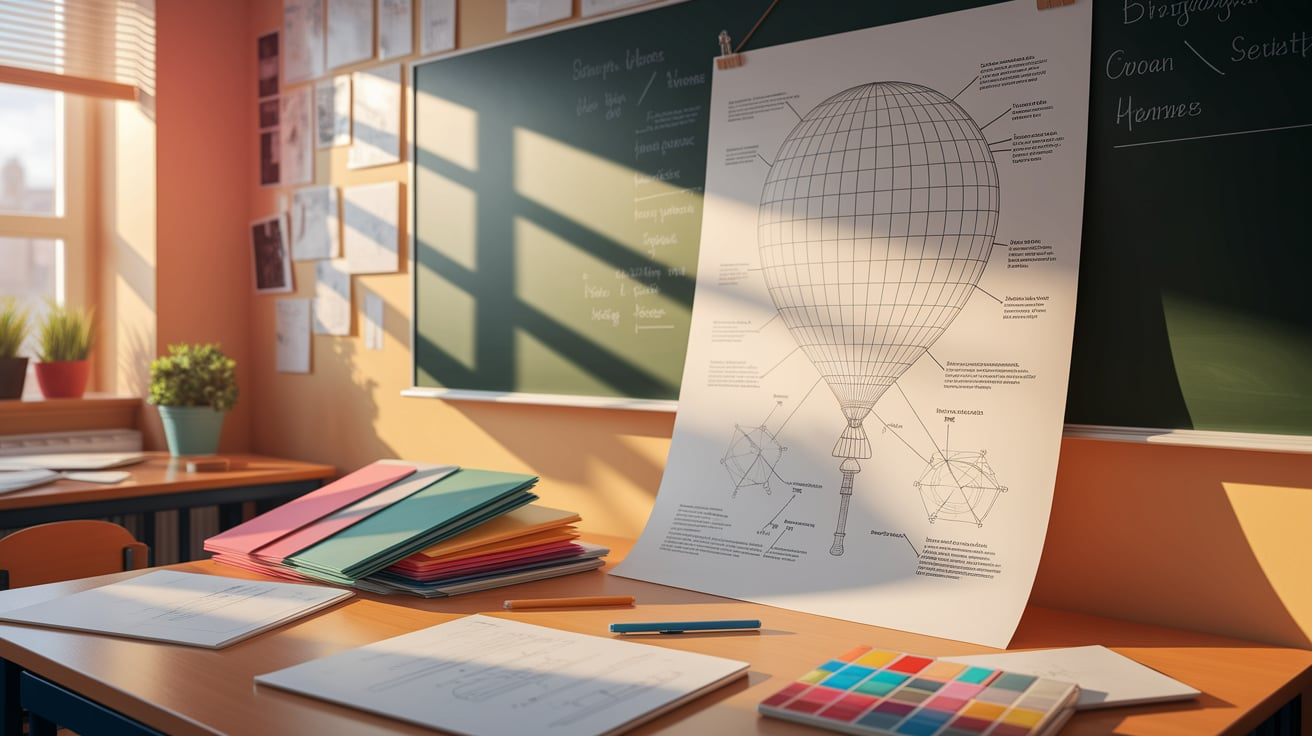
Create a detailed balloon construction diagram showing fabric types, seams, inflation ports, and handler attachment points.
Students learn technical drawing, material science, and manufacturing processes while developing research skills.
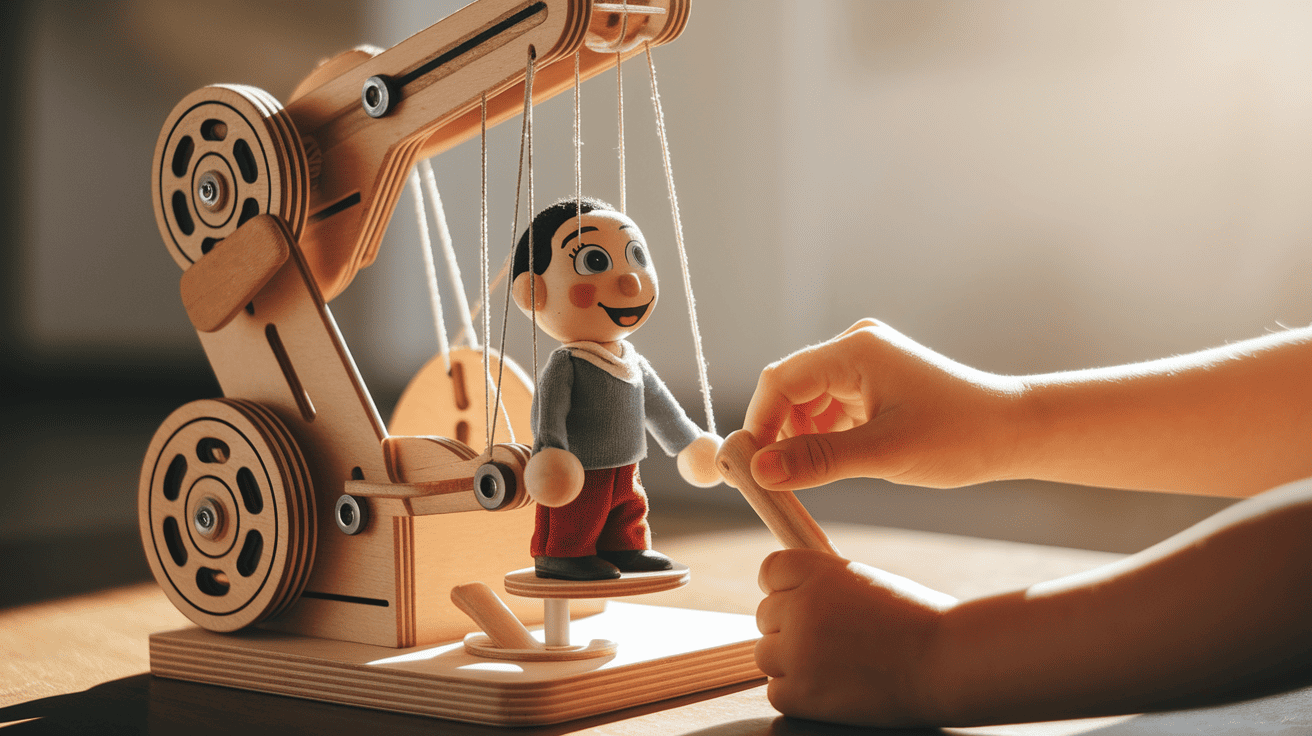
Build a mechanical system with pulleys, levers, or cranks to lift and control puppet movements without electricity.
Students study simple machines, mechanical advantage, and the principles of engineering design.
They develop construction skills and physics principles used in entertainment tech and puppet manipulation.

Compose an imaginative narrative about what happens when all parade balloons escape simultaneously.
Include character development, conflict resolution, and creative plot twists.
Students learn story structure, creativity, and responsibility through character creation, problem-solving, and storytelling.
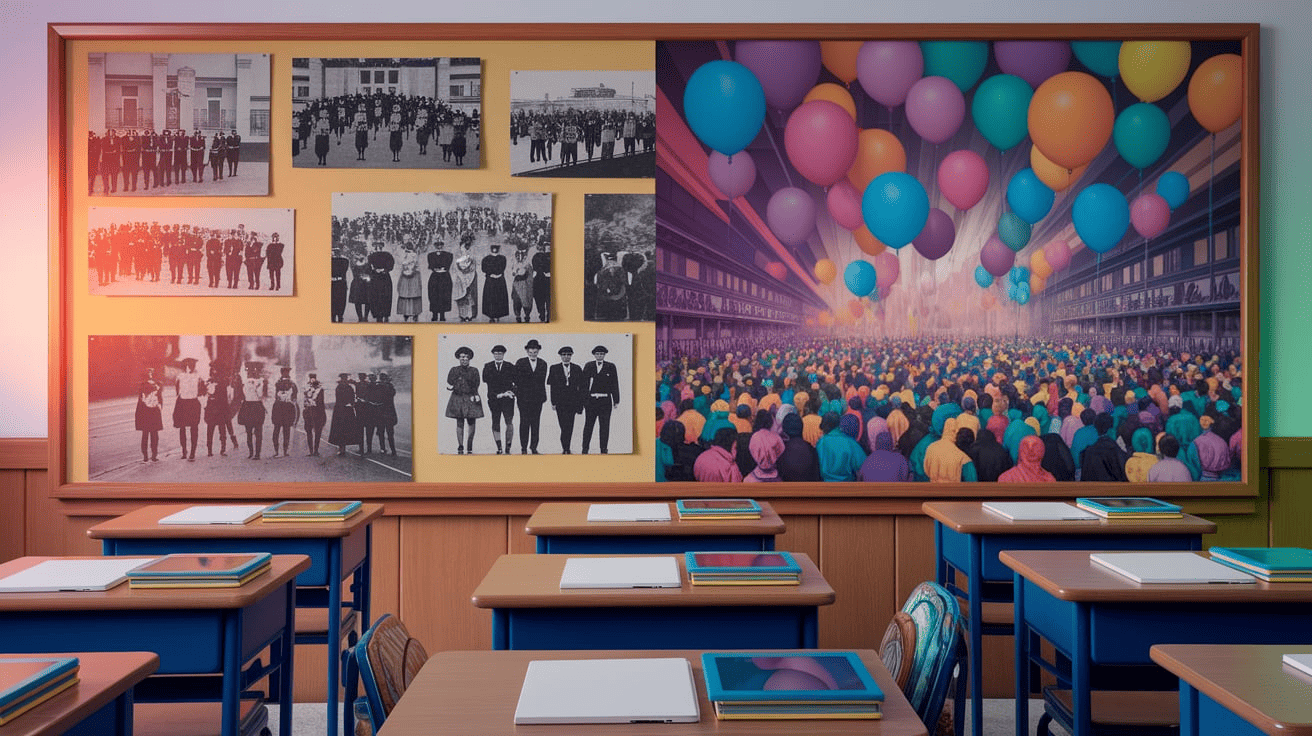
Research and compare the balloons and cultural impact of the first parade versus modern celebrations.
Students gain research skills, analytical thinking, and historical understanding by studying technological progress and cultural evolution.
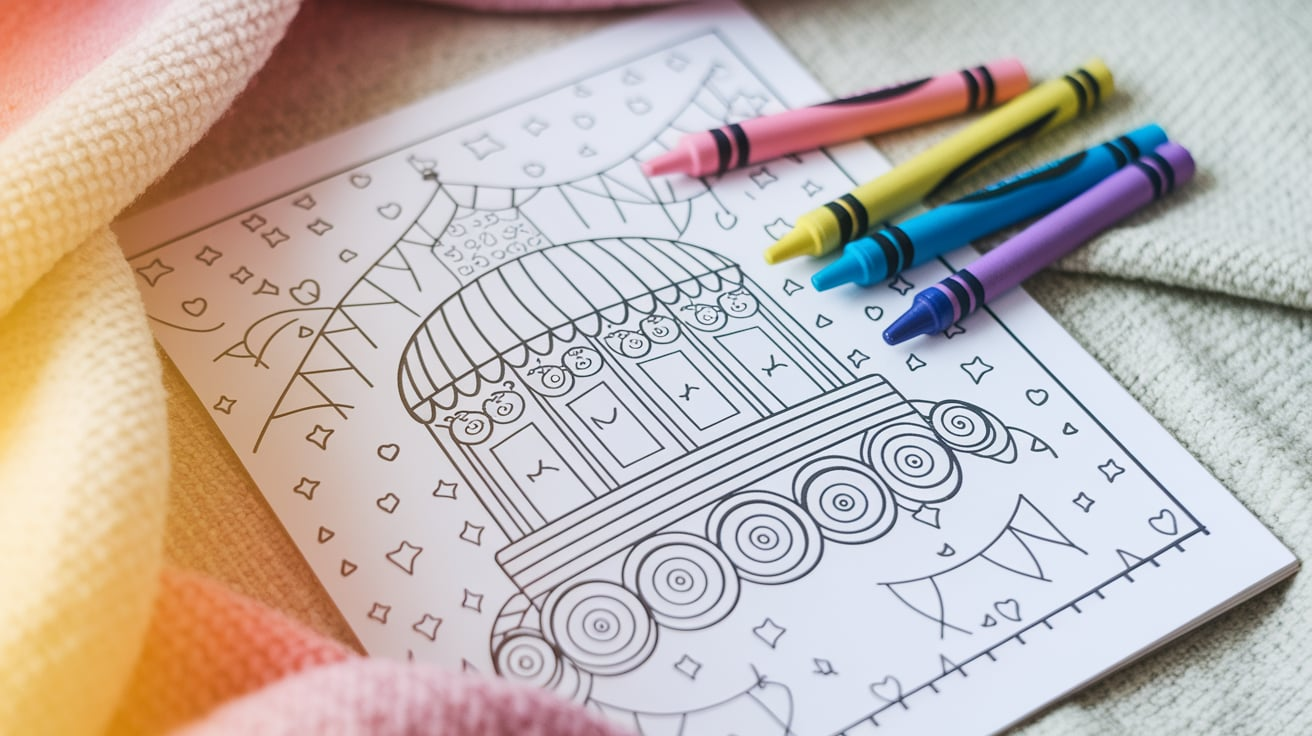
Create detailed line art suitable for coloring that captures the excitement and complexity of parade floats.
Consider age-appropriate detail levels and engaging compositions.
Students develop artistic skills, design thinking, and audience understanding while learning about commercial art and creating accessible content for diverse groups.
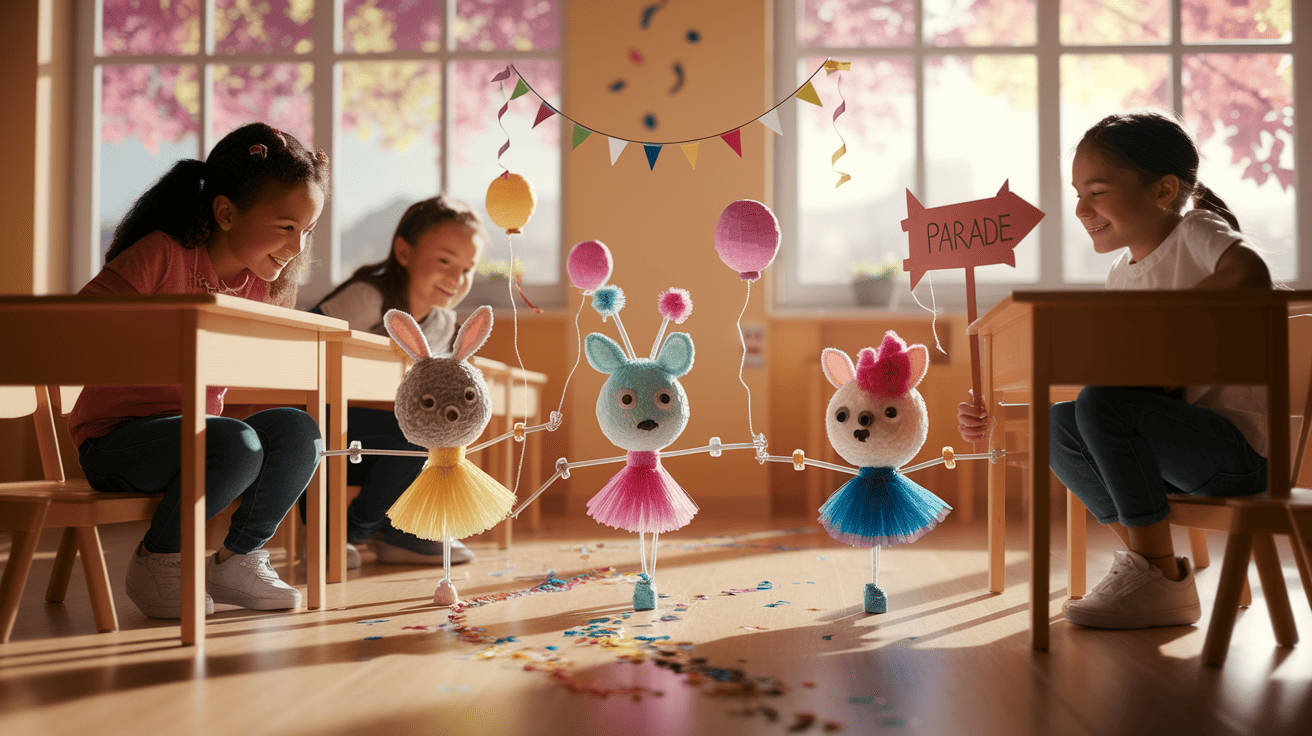
Construct simple puppets using straws, paper, and string to create a mini parade performance.
Students develop construction skills, performance, and teamwork while learning about scaled performance and adapting large-scale events to classroom settings.
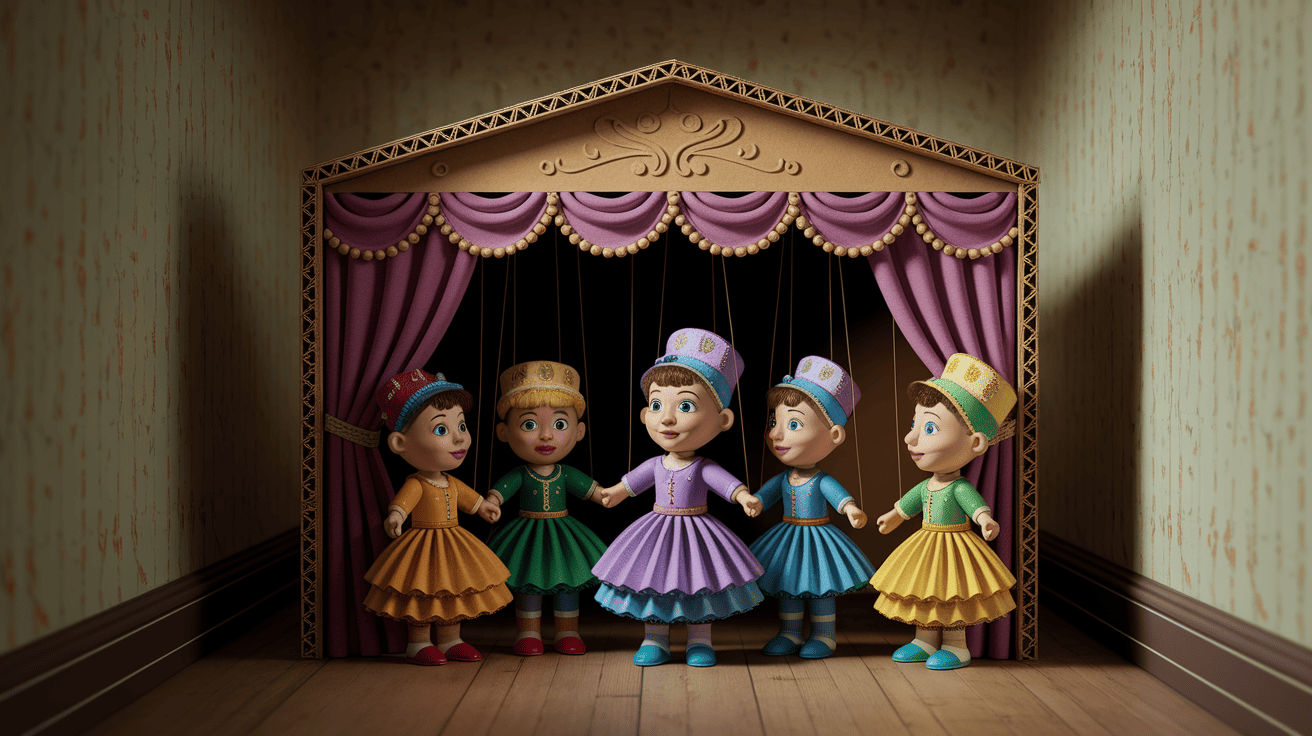
Design a portable theater stage specifically for parade-themed puppet shows using cardboard, fabric, and paint.
Students learn theater design, construction, and space planning while developing artistic skills and understanding how physical spaces enhance storytelling and engagement.
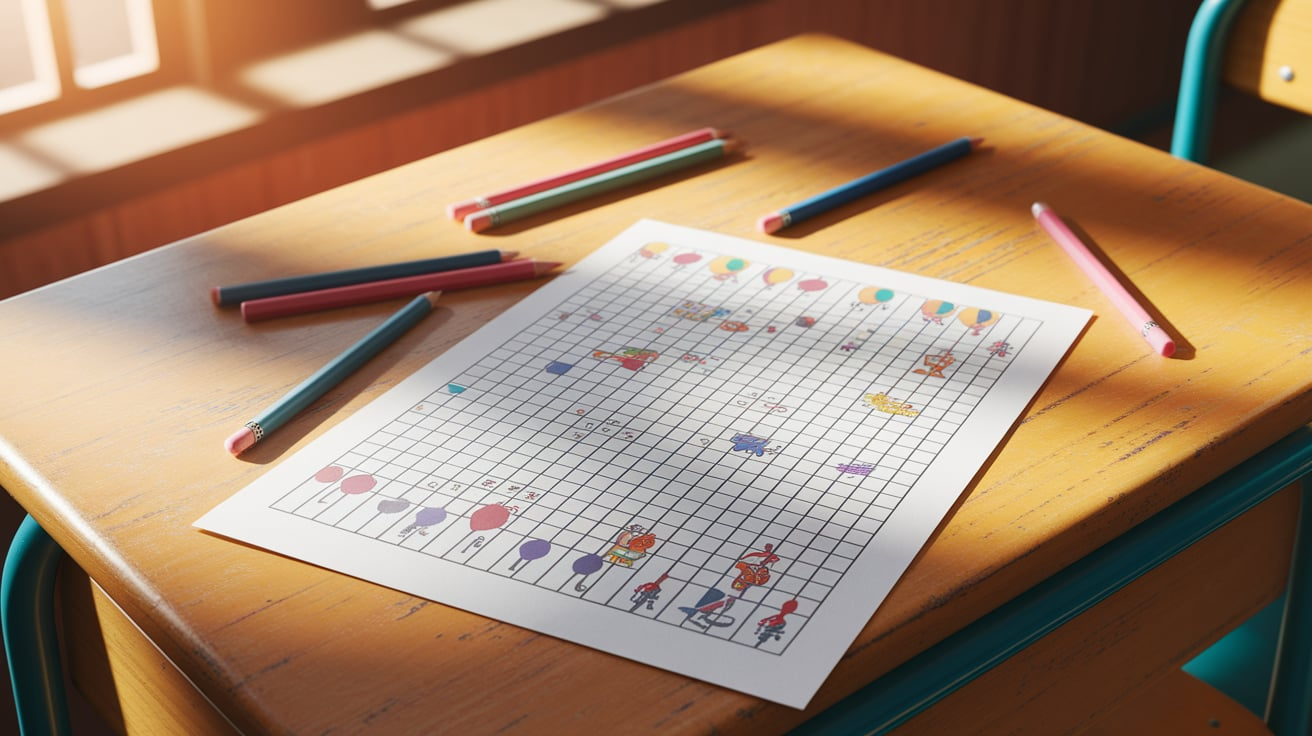
Create educational word games with parade vocabulary, historical facts, and balloon terms, including clues that teach and entertain.
Students develop puzzle skills, expand vocabulary, and learn educational game design while exploring teaching methods and game-based learning approaches.
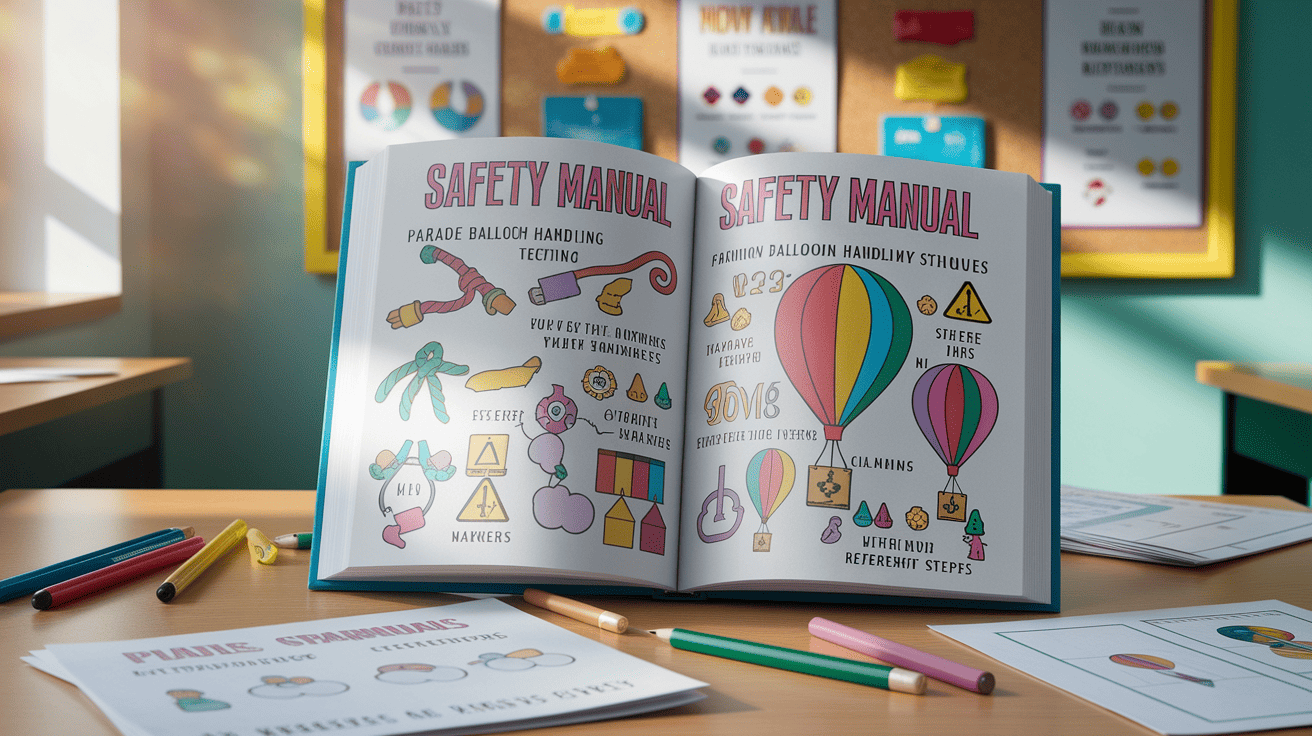
Research and create an illustrated safety manual on balloon handling, weather, and emergencies.
Include clear diagrams and step-by-step instructions.
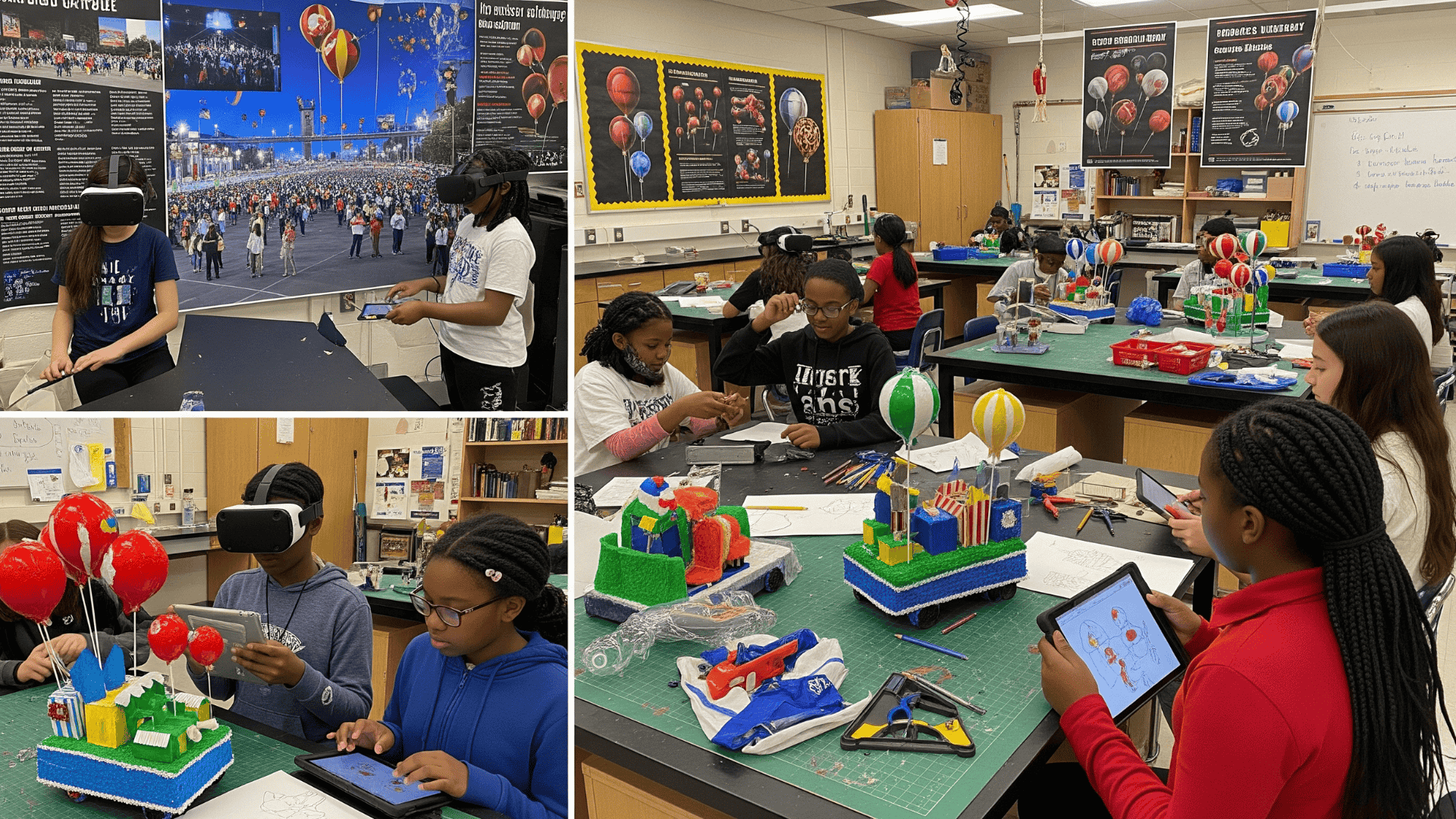
Students pursue advanced creative challenges via multimedia storytelling, engineering experiments, and cultural projects.
Sculpt a 3D clay parade to develop spatial and sculptural art skills.
Create an educational quiz on parade facts to teach game design and peer learning.
Build a balloon-powered hovercraft to study air pressure and friction.
Draw step-by-step balloon construction to learn visual instruction and technical drawing.
Write and pitch a float idea to practice entrepreneurship and public speaking.
Animate a parade route using software to learn digital graphics and motion design.
Perform a comedy skit on parade mishaps to develop humor and safety awareness.
Fold intricate paper balloons to blend cultural art and geometric reasoning.
Write and illustrate a storybook for preschoolers to practice children’s literature and illustration.
Role-play an interview to study parade careers and build oral presentation skills.
Create a photo collage showing parade evolution to build design and research skills.
Design parade merchandise to learn graphic design and marketing basics.
Use recyclables to build floats, promoting sustainability and creative problem-solving.
Write and vote on float ideas to develop persuasive writing and democratic engagement.
Write from a balloon’s view to study personification and creative writing.
Experiment with balloon lift and pennies to learn buoyancy and data analysis.
Build a balloon-shaped puzzle to enhance spatial reasoning and design.
Create a pop-up book to develop paper engineering and storytelling.
Sketch an imaginative balloon to combine fantasy art and technical feasibility.
Build a balloon-powered float to study motion and mechanical design.
Map out parade careers to understand event planning and role diversity.
Design a kids’ poster to communicate parade safety visually and clearly.
Preserve current parade artifacts for future findings and reflection.
Create a virtual parade route to study immersive tech and animation.
Host a parade-themed show to build performance and event planning skills.
Engineer a float with sustainable materials to promote eco-responsibility.
Design collectible cards to combine history, art, and marketing.
Build a weather tracker to apply meteorology to event planning.
Code a parade path planner to study logistics and math modeling.
Write parade scripts in three languages to foster global media skills.
Build a motion-based sculpture mimicking parade balloon movements using gears or pulleys.
Develop a complete emergency response plan for parades, covering weather, medical, and crowd scenarios.
Design a parade float inspired by nature’s mechanics, like bird wings or insect limbs.
Evaluate and improve parade access for people with disabilities through design and advocacy.
Construct an accurate 3D miniature of the parade route through NYC, including key buildings and streets.
Design a puzzle-based escape room themed around parade history, physics, and problem-solving.
Produce a short documentary capturing parade preparation, execution, and community impact.
Research and present how different cultures celebrate parades and festivals.
Illustrate how parade costumes and fashion trends have evolved since the 1920s.
Create an outline for a novel set during early parade development with accurate historical elements.
Analyze the financial impact of a parade on tourism, local businesses, and employment.
Interview older community members to record and preserve personal parade memories.
Design a historical map showing how parades have influenced city development and culture.
Run experiments on helium, air, and weather effects on balloon behavior.
Build a robot that can perform in a parade—move, flash lights, or play music.
Plan a speaker and sound system layout to optimize audio quality during parades.
Design an efficient, eco-friendly lighting setup for evening or night parades.
Use simulations or math models to study and improve crowd flow and safety.
Measure and evaluate a parade’s ecological footprint—waste, emissions, and energy use.
Create a series of parade costumes from various historical periods with accurate research.
Design buildings or structures meant to enhance the parade viewing and experience.
Paint a large wall mural representing a community’s parade traditions.
Compose original dance routines inspired by parade rhythms, movements, and balloon flow.
Build multiple sculptures representing parade themes for public display.
Craft parade-themed textile works using weaving, dyeing, or printing techniques.
Use math to calculate helium needs, float size, and handler counts for balloons.
Develop an algorithm to efficiently time parade entries and maintain spacing.
Use historical data to forecast how many people will attend a parade.
Compare the parade’s financial cost against its community and economic benefits.
Use basic shapes to create parade float blueprints, exploring how geometry helps with structure and design.
Guess and calculate the number of materials (balloons, streamers, flags) needed for a classroom parade.
Write short, fun rhymes inspired by parade sounds, floats, or balloon characters to boost phonemic awareness.
Draw a short comic featuring parade characters going on a humorous tale before showtime.
Interview classmates in costume and write mock “parade day” news reports for a class newsletter.
Debate silly topics like “Should dogs lead the parade?” to encourage public speaking and reasoning.
Share real or imagined parade stories aloud, fostering listening and oral storytelling skills.
Design posters inviting others to your classroom parade, practicing persuasive writing and visual design.
Organize float setup and performance roles with a colorful chore chart to teach responsibility and teamwork.
Brainstorm ideas for how to make a pretend parade calm and welcoming for sensitive classmates.
Craft traditional hats from around the world and explain their meaning in a culture-sharing activity.
Build a team to clean up after your mini parade and learn about environmental responsibility.
Invite grandparents to share past parade memories or help decorate floats.
Assign rotating leaders for mini parades who choose music, pace, or float order.
Choreograph a simple parade dance and practice marching in rhythm as a group.
Create a cardboard float with flaps, textures, and sound buttons for classmates to study.
Use paper plates, brads, and string to create a rotating balloon craft with colorful designs.
Set up a festive corner with props and take turns photographing classmates in parade attire.
Decorate a shoebox as a float and use finger puppets to act out a parade.
study parade sounds with simple instruments like tambourines, bells, and homemade drums.
Create balloon-themed behavior trackers with color-coded goals for class participation during parade week.
Track daily weather in the lead-up to parade day to predict ideal conditions for balloon flying.
Play “quiet/loud” games using parade music to understand safe sound levels.
Use paper flags or streamers to test how wind affects movement during an outdoor mini parade.
Steer a scooter through cones simulating parade crowd control, teaching motor skills and spatial awareness.
Design pretend food or souvenir stands using cardboard, math (pricing), and dramatic play.
Record a video tour of your mini parade floats with voice-over explanations for parents or peers.
Draw a map with moving stickers showing where each float is in the lineup.
Make a paper chain or sticker chart to track days until your classroom parade.
Sort balloons by size, color, and shape while practicing counting, patterns, and measurement.
Draw your parade from a bird’s-eye view as if a drone were filming above.
Use white crayons to draw balloons, then reveal them with watercolor paint as a “magic AR” effect.
Act out how parades are celebrated in other countries using simple puppets and storylines.
Place drawings, notes, and photos inside a box to open next year before the next class parade.
Make a flipbook that shows parade elements from different countries (e.g., dragon dances, samba costumes).
Create a paper float honoring a family’s immigration story through symbols and flags.
Draw and label people who help make a parade happen—drivers, cleanup crew, artists.
Break stereotypes by letting all students choose any costume role, from dancers to float drivers.
Show how to recycle materials used in balloon creation or suggest green alternatives.
Compete to sort “parade trash” into bins quickly—learning recycling and sustainability playfully.
Use solar garden lights or panels to light up your float, learning basic energy concepts.
Draw animals you might see during a park parade and how to keep them safe.
Track your steps walking your mini parade route and compare with others.
Design a plant-filled track in the schoolyard for practicing your parade in nature.
Draw the items that should be in a parade safety bag and when they’re used.
List ways to help others feel included and calm during loud or busy parade days.
Each child pairs with a “balloon buddy” and helps ensure they enjoy the whole parade event.
Design a snack menu for a parade day with fruits, trail mix, and fun presentations.
Create a parade-themed workout routine to energize before walking the route.
Write a simple safety jingle to remind classmates of rules while parading.
Make a colorful flyer advertising your class parade to attract visitors (real or pretend).
Practice pretend money use and social interaction with a mock concession stand.
Make thank-you posters for pretend community helpers or family sponsors of your parade.
Make floats or banners showing good deeds, kindness, or community values.
Create a float showcasing a class project or pretend business (e.g., a class bakery or art shop).
Build a float that holds coins and estimate/count how much it carries.
Design a cardboard maze where sound must travel (through tubes or cups) to reach the end.
Test paper, fabric, and foil to see which work best for flags or floats in different weather.
Use a hair dryer and box to test which materials fly best for a mini balloon.
Build strong towers from blocks and test how much weight (toy people) they can hold.
Design a pretend robot helper with features like balloon-counting eyes and parade music control.
Build a paper or recycled-material robot who gives directions or cheers in a parade.
Carry paper flags representing various countries to learn geography and global unity.
Act out a parade scenario where students must solve a float mix-up using calm strategies.
Send a small display (drawing, diorama) to a buddy classroom and trade parade ideas.
Write or draw rights (like play, safety) on paper balloons and string together for display.
Create a float or puppet featuring the Earth, trees, and animals celebrating clean air and water.
Make parade signs saying “Hello” in various languages and learn pronunciation.
Act like silly balloons that float, bounce, or spin using exaggerated body movement.
Create a hallway mural where kids can attach messages, drawings, or add details to a growing scene.
Paint a large image of a parade that includes every class member and their dream float.
Work in teams to create a mini parade performance combining dancing, float building, and music.
Create a maze-like hallway performance where classmates play balloons and guides.
Paint banners and signs to decorate lockers or doors with parade spirit.
Perform science tricks (like baking soda rockets) in a pretend parade to wow classmates.
Lie down and spot cloud shapes before the parade begins to learn about weather.
Host a small fair showing projects like balloon lift, sound travel, or material tests.
Film or photograph the float-building and practice process, then share with families.
Let students explain their parade experiments in stations for other classes to visit.
Pair up older and younger students to share float science or energy-saving ideas.
Assign students mayor, police chief, or planner roles and discuss who does what during a big parade.
Create peaceful posters about freedom, inclusion, or fairness for a civil rights-themed parade.
Vote for themes, songs, or banner slogans to practice democratic process.
Write a list of fair, fun rules for parade week and explain to the class.
March for playgrounds, clean parks, or helping animals—tie a simple cause to your parade.
Collect gently used toys and decorate a donation box float as part of your parade.
Write about how making or watching the class parade helped you feel proud or happy.
Ask classmates where they like to stand and how they enjoy watching parades.
Take a slow, balloon-themed walk to soft music to reflect and relax post-event.
Design a float with things that make you happy (e.g., rainbows, pets, kind words).
Draw or wear an outfit representing your culture and explain its importance.
Send invitations to school staff or family elders to attend and wave from special seats.
Map a path where kids watch out for insects and leave space for nature.
Brainstorm and illustrate what to do if the parade happens indoors.
Challenge kids to use scraps or discarded materials in all their parade designs.
Use battery-powered fairy lights to illuminate your group’s banner for indoor parades.
Take a walk in the schoolyard and describe how birds, squirrels, or trees would “celebrate.”
Decide what movement is best: bikes, scooters, walking—and test the pros/cons.
Play a game where float space, costume pieces, or spots are divided—discuss fairness.
Let kids vote on the order or positions for parade marchers to learn compromise.
Hold a circle meeting to make decisions about parade music, safety, and order.
Design a banner that represents what makes your class or community unique.
Explain through drawings and captions what your parade means (e.g., fun, friends, fairness).
Act out a situation like “We both want the same costume!” and practice resolving kindly.
Set up a station where students can invent solutions to float mishaps or planning mistakes.
Use classroom materials to build a tool that would help in a parade (e.g., streamer shooter).
Create toy models of your floats or balloons and display them on “store shelves.”
Use pretend coins to vote for floats with the kindest message—promoting kindness currency.
Use assigned roles (design, build, perform) to work together on a puppet float.
Create scenarios like “Our wheels broke!” and brainstorm possible fixes.
Set up books, maps, and photos so students can learn about global parade traditions.
Share what you made with other classes, just like a mini academic fair.
Track all the skills learned through parade work—from math to art to team spirit.
Write down silly or dramatic balloon tales to save for next year’s class.
Brainstorm ideas for smoother music, better floats, or longer routes.
Create simple graphs: How many kids liked the music? What was the best float?
Pose a deep question: “Can a parade change someone’s mood?” and write or draw answers.
Look at videos or photos and make a chart of what’s similar/different.
Write letters to helpers like custodians, principals, or parents.
Guess what future floats might look like or what new songs could be added.
Save best work, favorite pictures, and student quotes for next year’s students.
Write favorite parts of the parade on paper and keep them in a decorated jar.
Make up silly legends about how certain balloons came to life.
Plant a flower and place signs nearby thanking helpers or cheering others on.
Have older students teach float-building skills to younger ones.
Two students who don’t usually work together team up to build one float.
Place special classroom moments on signs along a walking path.
Rotate through craft stations to decorate one big float piece-by-piece.
Ask teachers to share childhood parade memories with the class.
Share favorite family snacks on parade day and talk about their meaning.
Record classmates talking about their favorite parts and share as an audio story.
Showcase eco-living techniques like permaculture during parade events to promote sustainable lifestyles.
Highlight sustainable transport options (bikes, EVs, etc.) to reduce parade-related emissions.
Establish a local currency to support parade vendors and boost the community economy.
Organize a community repair station during parades to teach waste reduction and reuse.
Preserve public parade spaces through community ownership and stewardship.
Create a seed-sharing and gardening network to link food security with parade traditions.
Set up a shared tool hub for float construction and community project support.
Develop renewable, community-owned energy to power parade activities sustainably.
Connect parades with local farms for fresh, locally sourced food offerings.
Offer health services and education alongside parade events to support community well-being.
Create a permanent hub for parade planning, art-making, and year-round cultural programs.
Deliver community-driven educational programs inspired by parade themes and local expertise.
Provide cooperative childcare services to increase family participation in parade events.
Include elderly support programs linked to parade activities to promote intergenerational inclusion.
Ensure parades are fully accessible and inclusive for people with disabilities.
Integrate mental health services and mutual aid during parades to foster emotional support.
Address community conflict through restorative justice modeled around collaborative parade planning.
Use parade projects to stimulate community-led business and wealth-building strategies.
Support Indigenous rights through parade land acknowledgment and solidarity-based initiatives.
Reimagine community safety through non-punitive justice methods linked to parade organizing.
Use parades to educate, advocate, and mobilize around reparations and racial equity.
Address the intersection of environmental harm and racial injustice through parade platforms.
Use parade advocacy to highlight and address displacement and housing inequality.
Celebrate immigrant communities through inclusive parade design and legal advocacy.
Ensure equitable food access at parades through local sourcing and food justice education.
Analyze parade performer movement and crowd dynamics using motion tracking and sports science.
Apply quantum computing to optimize parade logistics like route planning and crowd control.
Use biotechnology to develop eco-friendly parade materials and bio-based products.
study cognitive responses and accessibility tech through BCI in parade environments.
Utilize satellite tech for real-time parade tracking, coordination, and broadcasting.
Develop advanced nanomaterials for lightweight, weatherproof parade construction.
Create AI systems to manage parade safety, analytics, and crowd monitoring.
Implement blockchain for parade resource tracking, transparent budgeting, and decentralized coordination.
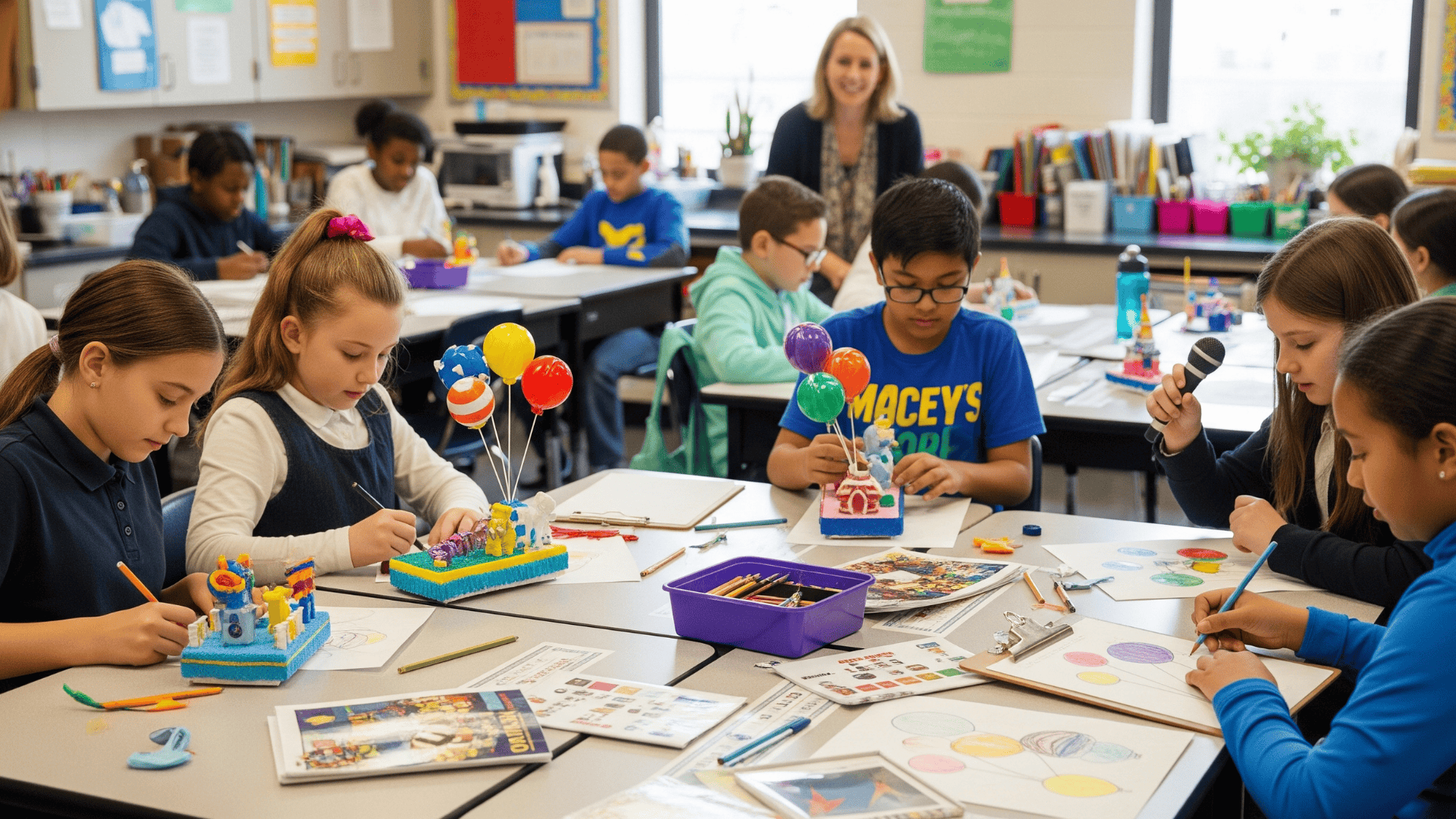
Altering the Macy’s Thanksgiving Day Parade into cross-curricular projects turns passive viewing into immersive, hands-on learning.
These activities spark excitement by bridging traditional academics with creativity and cultural relevance.
Students study real-world concepts through designing floats, engineering helium-free balloons, or role-playing as parade staff.
They achieve this through collaboration and a mindset of curiosity.
Every project celebrates the magic of the parade while enhancing classroom learning across multiple subjects.
It encourages students to see learning as interactive, hands-on, and fun.
These project ideas turn the Macy’s Parade into a learning laboratory where students engage with history, science, art, and technology.
Linking academic concepts to cultural traditions helps educators craft memorable lessons that boost critical thinking, creativity, and teamwork.
Students appreciate the complexity of simple entertainment while developing research, construction, performance, and communication skills.
These projects show how popular culture can be a powerful educational tool, making learning engaging and relevant.
They also respect American traditions while encouraging creative thinking for the next generation.
If you’re interested in more informational content, feel free to and research other blogs that you might enjoy.

